REVIEWING TWO DECADES OF MALE SUICIDE RESEARCH
This public guide is based on the following study: Bennett, S., Robb, K. A., Zortea, T. C., Dickson, A., Richardson, C., & O’Connor, R. C. (2023a). Male suicide risk and recovery factors: A systematic review and qualitative metasynthesis of two decades of research. Psychological Bulletin, 149(7–8), 371–417. https://doi. org/ 10. 1037/ bul00 00397

Read the full research report here.
Theories of suicide
Understanding psychological pain
Reviewing two decades of male suicide research
Risk Factors
Cultural norms of masculinity
Norms of male emotional suppression
Norms of male success and feelings of failure
Norms that deny and diminish men’s relationships needs
Interacting harms and building pain
Understanding universal drivers of suicidal pain
Recovery Factors
Regulating
2 Contents
What do we know about suicide?
psychological pain
Support for at-risk men Gender-sensitive services Training for professionals Engaging significant others Community and peer support Universal interventions Closing words 4 8 16 24 28 29 33 38 41 46 54 64 65 72 74 75 76 77 78 79 82
Recommendations
Male suicide is a public health emergency
While suicide rates differ worldwide, we frequently see more suicide deaths in men than women.
In places like Europe and the United States, about 75-80% of suicide deaths are male*. In the UK, suicide is the leading cause of death for men under 50, and men aged 45 to 64 have the biggest age-specific suicide risk**.
Why are so many men at risk of suicide?
This is a critical question for researchers to explore.
We need to understand what is putting men at risk and what must change to help more men access a meaningful and fulfilling life.
Every death by suicide represents the loss of an individual life - a person who once had hopes and dreams beyond suicidethat they could not find sufficient peace and hope in this life is a tragedy.
The male suicide crisis is also deeper and wider than the alarming number of men who die by suicide.
* Whitley, 2021
** Saini, Clements, Gardner, Chopra, Latham, Kumar, & Taylor, 2020

For every death, many more men attempt suicide, and even more men live with thoughts and feelings of suicide. Male suicide also impacts loved ones who have either been bereaved by male suicide or who love and care for men in suicidal pain.
Consequently, male suicide is a heartbeat of distress beating within many lives, homes, and communities.
Addressing the male suicide crisis is a matter of urgent, collective responsibility.
From 2020 to 2023, researchers at the University of Glasgow, conducted a review of 20 years of qualitative male suicide research, to bring together all the evidence on risk and recovery that we could find.
By understanding the factors that put men at risk and the factors that help men cope, we can start to learn how we can build relationships, communities, and societies that support men’s mental health, foster hope and connection, and reorientate men at risk of suicide, back in the direction of a meaningful life. This report shares our key findings.
WHAT DO WE KNOW ABOUT SUICIDE?
Understanding suicide is complex.
Every suicide is an individual story of unique challenges and struggles that a person has faced.
4
Many factors can contribute to a persons thoughts and feelings of suicide, including:





Biological. Our genes, hormones, brain chemistry, and/or health conditions.
sychological. Our personality traits - such as being a perfectionistour ability to regulate our emotions, our self-esteem.
Clinical. Mental health challenges, substance abuse, addiction.
Upbringing. Childhood events such as family dynamics, school experiences, community violence, financial instability.
Relationships. Relationship conflict and breakdowns such as parental alienation, bereavement, divorce, and loneliness.
Life stressors. Stressful/ traumatic life events like unemployment, accidents, abuse, bullying.
Cultural attitudes. Cultural ideas that may discriminate against aspects of our identity such as our race, sexuality, religion, gender, mental health, and/or having a disability.
Social and political. Our legal rights, economic opportunities, national security.
All these interconnected factors, and more, shape our psychology – how we think, feel, and behave - and contribute to the pain we experience and the coping strategies we use to deal with stress.
Given this complexity, it is very difficult to establish universal risk factors for suicide, i.e., risk factors that apply to every person who is suicidal. There’s no one-size-fits-all answer to who might be at risk of suicide.
For instance, although suicide rates are higher among people who are unemployed, not everyone without a job takes their life. Similarly, men with very successful careers can die by suicide.
As such, there is a tension in suicide research, between the complexity of the behaviour we want to understand, which limits what we can know about it and the urgency of the behaviour, which requires we do all we can to understand it better.
5
p
ESTABLISHED RISK AND RECOVERY FACTORS

Within suicide research certain factors have been identified as increasing risk in men.
These include, substance dependency, not being in a relationship, a diagnosis of depression, unemployment and low income (Richardson et al., 2021; Mallon et al., 2019; Qin et al., 2003).
Other research suggests men who feel a pressure to behave in ways traditionally associated with being ‘manly,’ like being competitive, hiding emotions, or aggression can also be at a higher risk (Coleman et al. 2020). Access to guns may also increase men’s risk. In the United States, nearly 92% of firearm suicides were male (Kaplan et al., 2009). Men are more likely to die by suicide on a first attempt, without a mental health diagnosis, and without contact with mental health services (Jordan & McNiel, 2020; Tang et al., 2022).
When it comes to how people cope with thoughts of suicide, research shows that therapies like cognitive behavioural therapy and dialectical behaviour therapy, along with some medications, can be helpful. Limiting access to things that can be used for suicide - such as firearms - can also be a protective measure (Zalsman et al., 2016).
Despite over 50 years of research into suicide, two recent meta-analysis* suggest we haven’t learnt much about what puts people at risk or what helps people recover.
1. Risk
Franklin et al. (2017) meta-analysis* of the predictive power of suicide risk factors found that our ability to predict suicide remained only slightly better than chance after over 50 years of research.
2. Recovery
A meta-analysis* by Fox et al. (2020), on the effectiveness of suicide prevention interventions, has suggested that “across five decades, intervention efficacy has not improved” (p. 1).
*In a meta-analysis, researchers collect and analyse the results from many different studies on the same topic. By doing this, they can get a broader view and draw more reliable conclusions than they could from just one study alone.
6
WHAT ARE SOME OF THE GAPS IN OUR KNOWLEDGE?
1. INTERACTION?
Suicide research has often focused on studying single risk factors such as childhood adversity, unemployment, or divorce in isolation.
This information can be challenging to make use of. For example, unemployment is a potential suicide risk factor, yet there are millions of unemployed people who do not kill themselves.
• So, what is it about unemployment in specific people that can lead to suicide?
• What else is happening psychologically to cause that outcome?
Right now, we don’t have sufficient understanding of how different risk factors interact to make certain people more vulnerable to suicide. As such, the existing evidence can feel like jigsaw pieces scattered around. It is hard to see the bigger psychological picture they represent.

Gender is the elephant in the room of suicide research.
Even though statistics show that more men die by suicide than women, not many researchers have looked into why.
• Why might being a man make someone more at risk of suicide?
Few researchers have asked what it is about being a man and the male experience that may make men particularly vulnerable.

7
GENDER
2. INVESTIGATING
THEORIES OF SUICIDE
Theories of suicide can help us understand some of the complexity of suicide by searching for common patterns across suicidal behaviours.
While theories cannot explain the circumstances of all suicidal behaviours, they can help illuminate some of the underlying factors that may contribute to suicidal thoughts and feelings, and the broader psychological landscape that might make someone vulnerable to despair.
Let’s explore some of the leading psychological theories of suicide.
8
PSYCHACHE
Unmet psychological needs
Shneidman’s ‘Psychache’ theory proposes that suicide arises from intense psychological pain, which he calls psychache
Psychache is a deep emotional pain resulting from unmet psychological needs.
Imagine a person who has always struggled to form close relationships and has a history of social rejection and isolation.
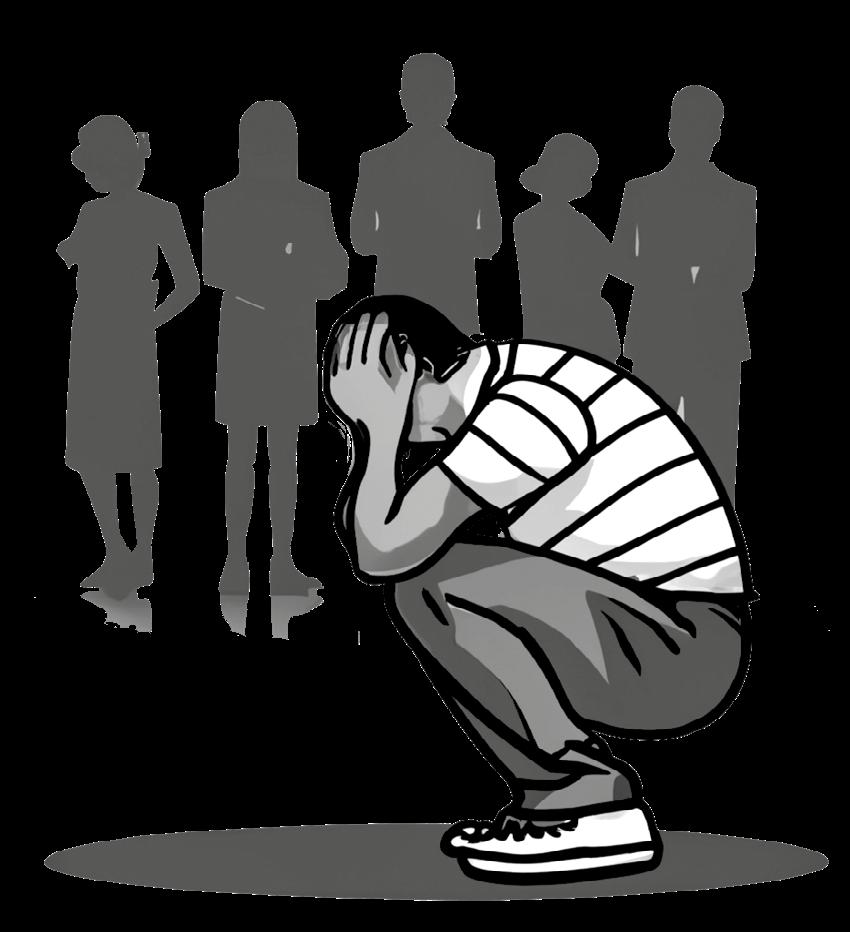
They may have a deep longing for meaningful connection but have trouble establishing or maintaining friendships or romantic relationships.
This person may feel tremendous psychache because of their unmet psychological needs.
Shneidman suggests that when a person’s psychache becomes too big, it can become unbearable, and people may think of suicide as a way to escape the pain.
Helping people to meet their psychological needs can help a person regulate their psychological pain and prevent suicide.
9
1.
ESCAPE FROM SELF
ainful feelings about self
Baumeister’s ‘Escape from Self’ theory takes the idea of psychological pain and suggests that it is mainly caused by painful thoughts and feelings we have about ourselves.
A person who is suicidal often feels that they are failing compared to others - that life has not lived up to their expectations - and they blame themselves for this.
Suicide is driven by a desire to escape these painful thoughts of failure and feelings of inadequacy.
Baumeister suggests managing suicidal pain may be about learning to see and understand ourselves in more compassionate, forgiving, and expansive ways.
Feelings of failure
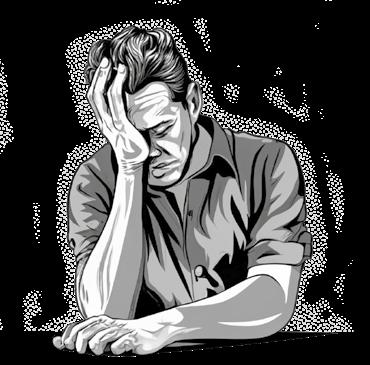

10
p 2.
USED TO PAIN
From thinking about suicide to making an attempt.
More people think about suicide than make an attempt. Suicide theories have tried to explore what is psychologically different between people who have thoughts of suicide and those who make an attempt.
Joiner’s theory suggests that suicidal thoughts happen when a person feels alone and a burden. Many people may feel this way.
Joiner suggests that it is the people who have gotten used to pain who are more at risk of harming themselves. Imagine a person who has had tough experiences that have made them used to suffering. They may be more used to pain and less afraid of dying.
Joiner believes that people most at risk of suicide are those who feel alone, like a burden, and are used to pain.

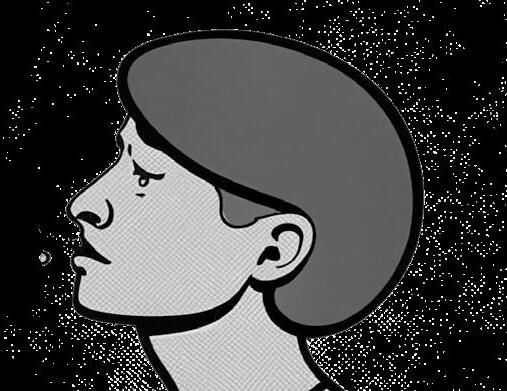
11
Alone A burden Used to pain
3. +
1. Thoughts of suicide
2.
Suicide attempt
Three stages of risk DEFEAT AND ENTRAPMENT
O’Connor’s theory of suicide has three parts.
First, he looks at background factors that can make someone more vulnerable to suicide, like a tough childhood or genetic traits.
In the second stage, life challenges can trigger intense feelings of defeat, entrapment, and hopelessness, leading to thoughts of suicide.
Factors that lead to a suicide attempt include being less afraid of pain or death, past exposure to suicide, and impulsive behaviour.



12
Genetics Childhoods Defeat Entrapment Hopelessness Exposure to suicide Used to pain Impulsive
2.
3.
4.
1. Background risk
Thoughts of suicide
Suicide attempt

SUICIDAL STORMS
Anyone can become suicidal
Rudd believes we all have a baseline risk for suicide because we all experience painful events in life. As that pain builds, some of us may move into a state where the pain feels too much and a suicidal mode is activated.
The suicidal mode can represent imminent danger to life. A person in the suicidal mode will often hold four beliefs about themselves:
Four core beliefs
I am unloveable
I am a burden I am helpless I can’t bear the pain
Importantly, Rudd believes the suicidal mode is so intense that it cannot sustain itself. Like someone lifting a very heavy weight, you cannot hold the weight indefinitely. Eventually, you have to put it down and rest.
The same is true of thoughts and feelings about suicide. It’s like a storm that comes and goes.
You may have multiple episodes of feeling suicidal but each is its own time-limited event that won’t last forever. This suggests two strategies for managing suicide risk:
1. Tools to keep someone safe from immediate harm when their suicidal mode is activated.
2. Long term support to reduce the factors contributing to a person’s baseline risk.
13
5.
KEY IDEAS FROM SUICIDE THEORIES
As we have seen, different psychologists have proposed different ways of explaining suicide.
They emphasise different psychological events and experiences as important. Within these theories, sources of suicidal pain appear to relate to 3 key psychological areas:
Three psychological sources of suicidal pain
2. Relationship with self
3. Relationship with others 1. Relationship with emotions
> Defeat
> Entrapment
> Hopelessness
> Helplessness
> Being used to pain
> Feeling badly about yourself
> Feeling like a failure
> Feeling like a burden
> Feeling unloveable
> Loneliness
> Lack of caring relationships
> Feeling like you don’t belong
> Feeling like you don’t matter
> to others
Psychologists suggest that if suicidal pain builds without meaningful release, we can reach a threshold where the pain becomes unbearable. We may then move from thinking about suicide to making an attempt - especially if we have had experiences where we have become used to pain.
14
putting it all together...
KEY IDEAS FROM SUICIDE
otential sources of suicidal pain: p
Relationship with emotions

Relationship with self

Building psychological pain
Relationships with others
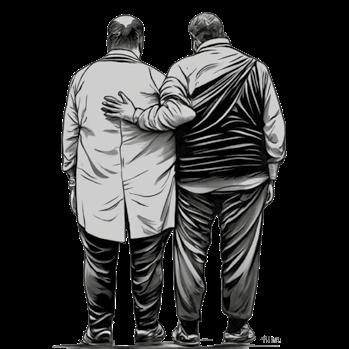
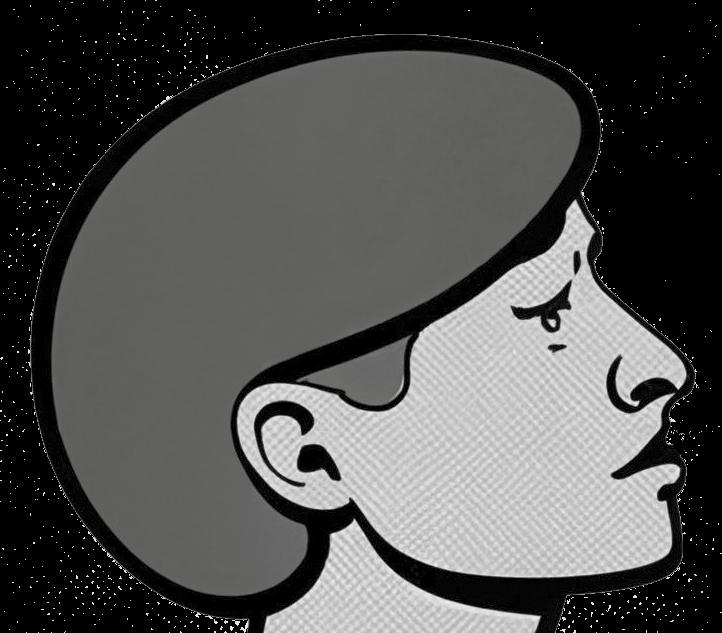

Levels of pain become unbearable.
Threshold for tolerating pain breached. Suicidal action occurs.
15
THEORIES
UNDERSTANDING PSYCHOLOGICAL PAIN



Different theories of suicide emphasise different psychological events and experiences as important:


What most theories have in common is ‘psychological pain’ and that people who die by suicide are in so much pain, they cannot bear to be alive. What is psychological pain and how can it help us explain suicide risk and recovery? Let’s explore this idea in more detail.

“the author of suicide is pain”
Edwin Shneidman, Clinical Psychologist and Suicidologist, Further Reflections on Suicide and Psychache, 1998.

psychological pain
16
trapped lonely a burden hopeless
PAIN - OUR INTERNAL ALARM
Pain helps keep us safe by sounding an alarm when we are in danger - like when we come too close to a flame - pain helps us know to move our hand away.

Pain systems are very useful. They help to protect us from danger and have evolved within our bodies over millions of years.
Fascinatingly, scientists have discovered that our pain systems may also react when we face social challenges like feeling excluded or rejected*. When we sense a threat to our social connections, our body’s alarm system may activate, causing us to feel psychological pain.
Why might social challenges be painful?

Humans are a deeply social species - we need other people to survive.
In our evolutionary past, our survival probably depended on our ability to successfully belong to a group and access things like food, care, and support. Scientists think that social safety was so important to us that our pain systems may have become activated in social situations, too.

ain is like an internal alarm system
Feeling pain can help to tell us when we are in danger...

... it is activated by physical harms such as fire...

... it may also be activated by social harms like when we fall out with loved ones or are excluded.

17
* Eisenberger, N. I., & Lieberman, M. D. (2004)
WHAT IS PSYCHOLOGICAL PAIN?
Psychological pain is an umbrella term to represent many different feelings like shame, guilt, anxiety, stress.
What these feelings have in common is that unlike feelings that feel goodsuch as joy and excitement - psychologically painful feelings are often unpleasant.
We may want to find a way to avoid, escape or transform them.
sychological pain is an umbrella term for different unpleasant emotions


Scientists think that psychological pain has two primary sources:
For example:
"I am worthless"
"I am a failure"
"I am not good enough"


For example:
“I don’t matter to people”
“I can’t trust anyone”
“I don’t make people happy”

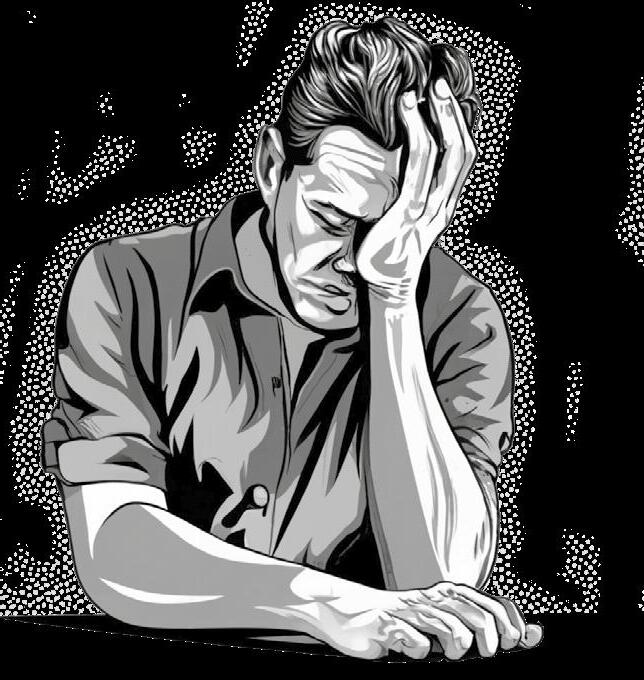
18
Anxiety
Grief Guilt Fear Anger Regret Jealousy
Despair Shame Emptiness
Rejection Humiliation
p
1. Painful thoughts about ourselves 2. Painful thoughts about relationships
PSYCHOLOGICAL PAIN & SUICIDE RISK
There are three important, interacting, dimensions of psychological pain that can help us understand suicide risk. They are: 1. Exposure, 2. Regulation, and 3. Threshold.
1. Exposure
How much psychological pain has a person experienced?
3. Threshold
When does the pain inside become too much to bear?

2. Regulation
What tools does a person have to regulate their psychological pain?
1. Exposure
1. Exposure, i.e. how much psychological pain has a person experienced?
We all experience psychological pain at some points in our lives, and for each of us, the circumstances of this pain will differ.
Some of us may have experienced terrible bullying in childhood. Other people may have been neglected by their caregivers or experienced the death of a loved one.
Each of us faces unique circumstances that may cause us to develop painful thoughts and feelings about ourselves and our relationships with others.
19
2. Regulation
Pain regulation refers to how we manage and cope with distressing emotions, thoughts, and challenging situations.
Effective psychological pain regulation helps us to navigate tough times, process our feelings, and maintain our well-being.
There are many ways to regulate pain.
Therapy, for example, can help us explore the drivers of our psychological pain, process past experiences, understand our emotions, and learn coping strategies.
We can also regulate pain by making significant life changes, like switching jobs to escape workplace bullying or leaving an abusive relationship.
Other techniques, like engaging in activities that distract and calm us down, may be smaller but still valuable. For example, watching a football match (if your team wins!), playing video games, or talking to a friend can temporarily ease our worries and make our pain slightly more bearable.
Pain regulation strategies can sometimes be unhealthy or dangerous.
While they may help us escape pain in the short term, they can cause more pain over the long term. For example, some people may use drugs, binge eat, or gamble, to try and numb their pain. These activities may help them temporarily escape their pain but can cause even more problems over the long term.
Other people may try to manage their pain by avoiding situations that make them anxious but find this leaves their lives becoming narrower and narrower.
Put simply - how we decide to regulate our pain can impact whether our pain gets bigger or smaller.
3. Threshold
3. Threshold, i.e. when does the pain inside become too much to bear, leading to thoughts of suicide and suicide attempts?
When people are overwhelmed by pain, it can become difficult to function in daily life.
Pain can drain our energy, colour our thoughts with negativity, and strain our relationships.
We need to find meaningful release for our pain so that our pain levels remain manageable.
If pain keeps building and we cannot find relief, we may reach a breaking point - a thresholdwhere we feel we cannot endure the pain any longer.
Some of us may gradually build up to this point, over many years. Other people may reach that threshold suddenly.
When the pain gets too much, and the threshold for how much pain we can cope with is breached, we may feel hopeless and trapped. We might start to think that suicide is the only way to end and escape our pain.
20
When we think about suicide risk, it can help to consider the three dimensions of psychological pain - exposure, regulation, and threshold - in interaction. For example:
Some people may be exposed to immense psychological pain through traumatic events.
If they have tools to regulate that pain effectively, for example, good emotional communication, and strong, loving support networks, their pain levels may remain manageable.
Despite enduring psychologically painful events, they can manage that pain. It never reaches the threshold where the pain becomes unbearable.
On the other hand, if someone is exposed to a lot of psychological pain and doesn’t have good ways to regulate and cope with that pain – maybe they drink and gamble when they are stressed, or keep their feelings locked deep inside - they may be at higher risk of reaching a breaking point and crossing the threshold of how much pain they can bear. They may start thinking about suicide.
Psychological pain does not always stem from major life events.
Of course, experiences like bereavement, abuse, and break-ups can be profoundly distressing. However, seemingly ‘minor’ events can also carry significant weight depending on our personal history and past experiences.
For example, an individual with a history of childhood bullying and low self-esteem might experience profound distress when confronted with criticism from a manager at work. Such criticism could trigger old emotional wounds, evoking feelings of inadequacy and vulnerability.
As such, it’s challenging to anticipate how different situations and events may impact individuals, given that we each hold distinct emotional histories.
21
Good pain regulation High exposure to psychological pain Threshold not breached Bad pain regulation Threshold breached
PAIN
PSYCHOLOGICAL
Imagine that each of us carries a tank of psychological pain inside.
Imagine an ‘exposure’ pipe at the top of your tank that carries pain in and a ‘regulation’ pipe at the bottom that carries pain out. Picture a black line near the top of your tank that marks the ‘threshold’ for how much pain you can tolerate in your tank before the pain becomes too much.
Each of us will face different experiences and challenges in our lives that will pour pain through our ‘exposure’ pipe and into our tanks.
If we have good tools to regulate that pain, we can release some of it through our regulation pipe.
However, if too much pain comes in through our exposure pipe and our regulation pipe is ineffective in getting it out, the pain in our tank may keep filling up until it reaches our ‘threshold’ limit. At this point, the pain inside may be too much to bear, and thoughts of suicide may become activated.
In trying to understand male suicide, it can help to think about the following questions: psychological pain
1. What psychological pain has a man experienced?
2. What tools does a man have to regulate his psychological pain?
3. What are the signs to indicate the threshold for how much pain a man can endure is in danger of being breached?

22
PSYCHOLOGICAL PAIN TANK AND SUICIDE RISK

Exposure: Everyone is exposed to different life experiences that may pour pain into their tank.


Threshold: If we are exposed to a lot of pain and can’t regulate it well, the pain in our tank may keep building and reach the threshold of how much pain we can endure, leading to suicidal actions.
Regulation: By managing and regulating our pain we can move pain out of our tank to stop it from getting too full.
23
PSYCHOLOGICAL PAIN TANK Threshold Regulation Exposure
2.
3. 1.
REVIEWING TWENTY YEARS OF MALE SUICIDE RESEARCH



In January 2020, we began a study to review the last two decades of research on male suicide.

We searched multiple academic databases to find all the qualitative studies on male suicide. Unlike quantitative approaches that look at numbers or statistics - which can be useful too - qualitative researchers use methods like interviews and focus groups, to talk to people, listen to their stories, and try to get a deeper understanding of their experiences.
We combed through over 19,000 search results and found 78 studies that met our criteria. These studies brought together insights from over 1,695 men who are suicidal or people bereaved by male suicide. Studies came from 18 countries including Canada, the UK, Australia, Brazil, Ghana, Uganda, and Norway.
We then repeatedly reviewed and explored these studies - combining and analysing their findingsto find common patterns about male suicide risk and recovery factors. By exploring all these studies together, we wanted to build bigger and broader conclusions about male suicide.
In particular, we looked for evidence to distinguish distant risk factors from immediate risk factors.
1. Distant risk
Distant risk factors were those associated with potential exposing men to psychological pain and increasing their suicide risk. For example, in a study from Nepal, researchers described how men who experienced money issues felt like a failure.
“Men were described as feeling like a failure because of financial burdens” (Hagaman et al., 2018, p. 719)
In our analysis, we categorised this as a distant risk factor for suicide, linking money difficulties to feelings of failure and negative self thoughts.
2. Immediate risk
Immediate risk factors were associated with a suicide attempt or death. For example, in a study from Brazil a participant said:
“I tried to set up a business for myself and my family and it didn’t work. I lost money and there was no other alternative except killing myself” (Ribeiro et al., 2016, p. 5)
Here, the participant appears to have drawn an association between his business failing and his suicide attempt suggesting this was potentially an immediate factor related to his attempt.
25
MAKING SENSE OF OUR FINDINGS
Suicide is complex and many factors contribute to risk and recovery.
Our study is based on qualitative data - primarily interviews - and this type of data collection limits what we can learn. While qualitative evidence is essential for understanding the human side of suicide, it has its limits in providing a comprehensive and statistically precise understanding of such a complex problem.
Qualitative evidence often comes from a small group of people. We cannot assume that the experiences of this group represent everyone else’s. People’s stories are personal. What was painful or helpful for one individual may not be the same for others.
Qualitative evidence therefore cannot give a complete picture of the diverse factors influencing suicide. We therefore do not claim that our findings are the complete story, only some of the potential jigsaw pieces.
As with all research it is important to interpret our evidence with caution, weighing up the shortfalls and limitations of what the methodology can meaningfully tell us.
COUNTING THEMES
To understand how common certain themes were across the 78 studies, we counted their prevalence
As you read the findings, you’ll notice percentages associated with each theme. For example: In 46% of studies, painful events in childhood appeared to impact some men’s emotional development.
It’s crucial to approach these numbers with caution. Not every study explored the same topics, making it challenging to determine the real frequency of these themes.
For example, not every study looked at childhood experiences, so we don’t actually know how widespread this issue is.
All our numbers need to be viewed with caution. However, counting the themes helped us see how often they came up.
Even though our study has some limitations, we believe it holds significant value.
We’ve brought together 78 individual studies from the past 20 years, integrating and interpreting their findings.
20 78 7 19,000 YEARS OF RESEARCH DATABASES SEARCHED FINAL STUDIES SEARCH RESULTS

26
RISK FACTORS
CULTURAL NORMS OF MASCULINITY & MALE SUICIDE RISK
1. 2. 3.
Norms of emotional suppression and male suicide risk
Norms of male success, feelings of failure, and male suicide risk
Masculine norms that deny and diminish men’s relationships needs and male suicide risk

28
CULTURAL NORMS OF MASCULINITY & MALE SUICIDE RISK
In 96% of studies, we found evidence of a potential relationship between cultural norms of masculinity and male suicide risk.
What
are cultural norms of masculinity?
Cultural norms of masculinity refer to society’s expectations and beliefs about how men should behave.
These norms can shape how men see themselves and interact with others, and also how people and societies see and interact with men.
We inherit cultural ideas from the generations that lived before us. When we’re born, we often enter a society with a long history of certain traditions and ideas about what it is to be a man.

Cultural norms do not define men.
It is important to remember that ‘cultural norms of masculinity’ does not refer to a set of fixed traits that are true for all men. Ideas about and expressions of masculinity are multiple. Some men may reject cultural norms, while other men may feel a strong need to live up to them.
Whether we agree with cultural norms or not, they can have a strong influence on our psychology - how we think, feel, and behave.
In our study we found that certain cultural norms may increase some men’s suicide risk.
Cultural norms of masculinity Suicide risk of studies 96%
29
MALE BIOLOGY

Our results are not in relation to male biology.
We are not suggesting that there is something internal to men that is broken or dysfunctional.
Men are not toxic or damaged.

SOCIETAL EXPECTATIONS OF MEN
Instead, our findings refer to external societal expectations for men to behave in certain ways which may harm some men’s well-being.
Cultural norms of masculinity are like an unwritten rule book about what it means to be a man. For example:
> What makes a man valuable to others?
> What emotions can men express?
> What jobs should men do?
> What should men be ambitious for?
> What makes a man attractive?





30
Every man is an individual shaped by a unique lived experience, cultural context, and distinct biology.
Most men socialised in masculine norms are not suicidal.
However, in our study, we found certain cultural norms may increase some men’s suicide risk by exposing them to psychological pain and undermining their tools to regulate that pain.
These norms concerned:
1. Men suppressing their emotions
2. Failing to meet norms of male success
3. Norms that diminish and deny men’s relationship needs
These norms meant some men seemed to experience denial, disconnection, and dysregulation within three core psychological areas of their lives:
1. Their emotions
2. Their sense of self
3. Their relationships with others
2.
1.
3. Relationship with self Relationship with emotions


Relationships with others


31
Denial Disconnection Dysregulation
The impact of these cultural norms seemed to be that some men experienced increased psychological pain, diminished ability to regulate that pain, and an increased suicide risk.


Increased psychological pain and suicide risk
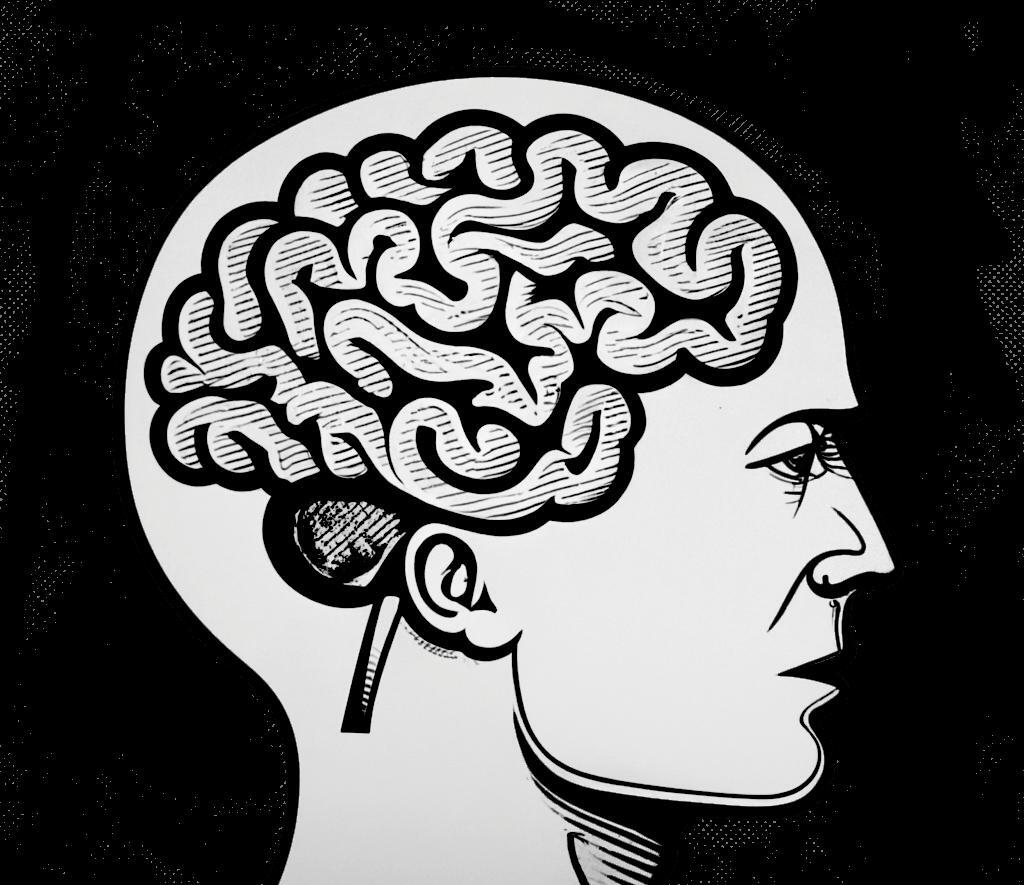
Let’s explore each area of risk
32
1. NORMS OF EMOTIONAL SUPPRESSION AND SUICIDE RISK


In 92% of studies, we found evidence to suggest masculine norms that encourage men to deny and suppress certain emotions may increase some men’s psychological pain and suicide risk.
Key Findings:
Distant risk
1. Emotional suppression and dysregulation
2. Childhood challenges impacting emotional development
3. Getting help is seen as weak
4. Negative experiences accessing help
5. Short-term coping strategies make pain worse
1. Relationship with emotions

Immediate risk
6. Suicide as a release from pain.
33
Distant risk
1. Emotional suppression and dysregulation.
Cultural norms for men to deny certain emotions, to be strong, independent, and cope with their problems, seemed to impact some men’s wellbeing, including their internal relationship with their feelings.
Some men appeared to become disconnected from their emotions and struggled to identify, understand, and process their feelings.
Men, young and old, described not having the words to recognise and handle their distress, even when feeling very bad inside.
A young man from a study in Ireland that interviewed men within 24 hours of a suicide attempt remarked: “I’m miserable and I don’t know why. You don’t know why you are that way, you don’t know what’s wrong with you.”
(Cleary, 2012, p. 501)
Norms of emotional suppression also impacted men’s external expression of their feelings.
Men suggested that expectations for them to be able to cope with their problems meant they felt a pressure to conceal their pain from people around them. Some men felt it was their job to be strong and protect others from their pain. Other men said they had no one they trusted to talk to.
Some men feared appearing weak or worried about burdening or disappointing loved ones.
A 36-year-old man in Australia who had attempted suicide remarked:“With my closest friends it was, “I don’t want you to know how
I feel.” I’m a dad of three kids and a husband. I’ve got a good job. I don’t want you to know that I’m so sad that I cry at red lights.”
(Fogarty et al., 2018, p. 264)
The cultural denial of men’s emotions and some men’s subsequent disconnection from their feelings seemed to cause some of these men’s distress to become dysregulated.
Dysregulated emotions are when our feelings become overwhelming and difficult to control or manage. It’s like our emotions are all over the place, making it difficult to think clearly.
In our study, men described that as difficulties in their lives increased, their emotions built up inside, and became increasingly dysregulated and difficult to live with, leading some men to think of suicide.
A 25-year-old Canadian man describes his difficulties expressing emotions: “I felt like I was treading in a hurricane, you feel very tired, kind of exhausted and when you get a little break then something comes along and just washes you over and you’re choking and drowning again.” (Everall et al., 2006, p. 381)
2. Childhood challenges impacting emotional development.
In 46% of studies, painful events in childhood and adolescence - such as abuse, bullying, family break-ups, and neglectful caregivers - appeared to impact some men’s emotional development.
Men suggested these early-life experiences meant they grew up believing the world was unsafe.
34
The emotional impact of childhood traumas may be compounded for men by masculine norms to conceal their pain.

Painful events in childhood
Norms of male emotional suppression

Some men learned to cope by disconnecting from their emotions, self-harming, or using drugs. Other men began to think about suicide from a young age as a way to escape the pain.
In relation to experiencing abuse as a child, a 71- year-old gay man from Canada remarked: “I would wish very much that I was dead, even at an age when I am not sure a kid understands what death is.” (Ferlatte, Oliffe, Salway, et al., 2019, p. 1533)
Men may face a double jeopardy regarding the impact of childhood challenges on their lives.
The combination of being exposed to painful experiences in childhood with also being socialised in masculine norms to suppress and conceal their distress may result in a situation where men who have endured childhood trauma are left particularly isolated.
Speaking about a friend who died by suicide, a participant said: “… many bad things happened in his childhood that he has never dealt with … and that he has, all the time, pushed it aside and pushed it aside … he felt so lonely … very lonely with all these bad feelings … (Kiamanesh, Dyregrov, Haavind & Dieserud, 2014, p. 392)
3. Getting help is seen as weak.
In 29% of studies, some men rejected seeking help because they felt it was ‘weak’ to get support, and as men, they needed to be strong, stay in control, and cope with challenges by themselves.
Bereaved loved ones also described struggling to persuade the men in their lives to access professional support, even when they were struggling.
35
A 21-year-old man from South Africa who had attempted suicide remarked: “You don’t feel comfortable sharing problems with people, because people might think you are weak or you are less of a man.” (Meissner & Bantjes, 2017, p. 788)
4. Negative experiences accessing help.
In 35% of studies, some men did seek help for their mental health but had negative experiences with very busy services focused on short-term, quick ‘fixes’ like medication.
A participant from a Canadian study with men who were suicidal, and had a clinical diagnosis, commented: “You cannot have a patient come in your office for 5 min and give him a diagnosis or send him on his way with medications.There’s more to getting well than medication.” (Strike et al., 2006, p. 35)
Some men felt staff were stigmatising and unhelpful. Other men rejected a medical understanding of their pain and wanted professionals to acknowledge and explore the broader external challenges in their lives.
If men expressed their distress calmly and in matter-of-fact tones, mental health professionals sometimes underestimated the severity of their feelings. Consequently, men were sometimes assumed to not be at risk even when they were.
5. Short-term coping strategies make pain worse.
In 42% of studies, evidence suggested that the impact of cultural norms for men to deny their pain, be strong and cope with their problems, meant some men found their own strategies for regulating their stress, such as drinking, fighting, sex, gambling, self-harm, or drugs.
Men described these behaviours as “pain-relief.”
They suggested that they helped them to cope, relax, feel in control, ease tension, switch off the noise in their brains, or to feel something positive.
Some men also suggested that drink or drugs helped them open up in a way that they couldn’t do when sober. For some men, these “pain-relief” behaviours started from a young age in response to childhood traumas.
In the long term, for many men these “painrelief” behaviours did not help them to deal with underlying problems and often caused longerterm damage. Some men found that these coping mechanisms added to their feelings of shame and self-loathing, or caused more stress and strain in their relationships, making them feel even lonelier and more isolated.
A 35-year-old, U.K. man on probation for shoplifting who attempted suicide said: “Although I’m trying to lift myself with this short-term miracle [drinking], long term it was doing me more damage because it was pushing me lower.” (Mackenzie et al., 2018, p. 149)
36
Some men appeared trapped in dangerous cycles of seeking shortterm relief from their pain through behaviours that increased their long-term pain and isolation.
1. growing psychological pain

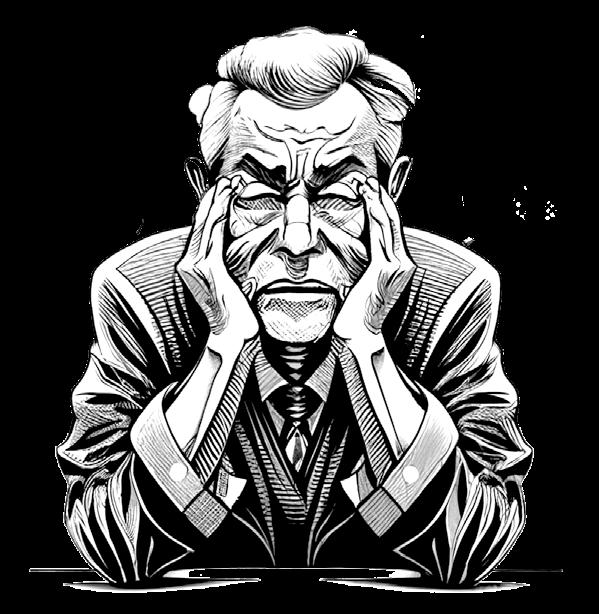
2. pain relief behaviours

3. pain increases
Immediate risk
6. Suicide as a release from pain.
In our study, the most common explanation for suicide was as a way to escape unbearable psychological pain.
A 60-year-old unemployed gay man from Canada described his suicide as a pain-ending strategy: “Mostly the experience of that intense despair that I would feel suicidal is interior. … The worst pain is, you just don’t think it will ever stop.” (Oliffe et al., 2017, p. 893).
In 56% of studies, men suggested they felt overwhelmed by their pain and couldn’t see a way to end it other than by ending their lives.
In 31% of studies, men also described feeling hopeless, trapped, and defeated as reasons for suicide. Some men felt their lives were spiralling out of control, and they didn’t have the energy or tools to regulate their pain, make changes, or deal with the problems consuming their lives. The pain men felt appeared to rob their lives of hope, meaning, purpose and energy.
A 23-year-old Canadian man who attempted suicide describes his feelings of entrapment: “Everything seemed very dark in a lot of ways. I had the feelings of being trapped, sometimes hopelessness, like I wasn’t ever going to get out of it.” (Everall et al., 2006, p. 378)
37
2. NORMS OF MALE SUCCESS, FEELINGS OF FAILURE & SUICIDE RISK


In 76% of studies, we found evidence to suggest that men felt certain pressures to meet standards of male success. Failing to meet these standards seemed to increase men’s psychological pain and suicide risk.
Key Findings:
Distant risk
1. Feeling like a failure
2. Pretending to be fine
3. Low self-esteem from childhood
2. Relationship with self

4. Suicide as the killing of a failed self
5. Suicide as regaining control Immediate risk
38
Distant risk
1. Feeling like a failure.
In 54% of studies, men appeared to internalise an idea of what it means to be a successful man.
Men seemed to compare their achievements to this standard and felt that they were failing in areas of life where society expected men to do well.
A man, aged 50 to 59, from a Canadian study with suicidal men remarked: “Expectations I’ve had on myself in terms of what I consider to be successes in life—a good father, a good husband, a good provider, um,those are probably at the top of the list, and it’s my belief I failed at - at all of those three responsibilities.” (Oliffe et al., 2019, p. 324)
Descriptions of specific failures varied and included job problems and unemployment; not being able to provide financially; experiencing poor mental health; relationship challenges, fights and separations; sexual problems; sexuality; experiencing sexual abuse; failing at exams and studies; addiction problems and criminal activity.
Men in our study appeared to believe that they had failed to live up to expectations of what a successful man should be.
Feeling like a failure was a source of shame for some men, undermining their self-esteem, and causing painful feelings such as shame, anger, selfloathing, anxiety, guilt, and self-blame.
2. Pretending to be fine.
In 31% of studies, men described pretending to the rest of the world that they were ‘okay’. They described having two ‘selves.’ An external self that they presented to the outside world as someone happy, coping, and in control, and an internal self who was struggling and in pain. As the gap between their external and internal self increased, some men felt lonelier than ever.
A young Irish man who attempted suicide said: “I hate myself for trying to be somebody else. … I got so pissed off putting on a front— always putting a happy face on and always being a laugh, a joke.” (Cleary, 2005, p. 163)
3. Low Self-Esteem from Childhood.
In 15% of studies, problems in childhood impacted the development of men’s self-esteem. Childhood challenges such as being bullied, gay, or abused by caregivers, made some men feel like a freak, abnormal, different, ashamed, and like they did not belong. The legacy of these early-life experiences still seemed to impact some men’s self-esteem in their adult lives.
In a Norwegian study exploring substance abuse and suicide in men, a participant recalled: “Since I was quite small I was told (by his father) that ‘you won’t amount to anything’. Even now, when I encounter new situations, his words come back to me.” (Biong & Ravndal, 2007, p. 251)
39
Immediate risk
4. Suicide as the killing of a failed self.
In 46% of studies, men described suicide as the drive to kill a failed self. Men seemed to believe that they had totally failed in life and described a complete collapse in self-worth.
A Brazilian man described his suicide attempt as such: “I tried to set up a business for myself and my family and it didn’t work. I lost money and there was no other alternative except killing myself. ” (Ribeiro et al., 2016, p. 5)

5. Suicide as regaining control.
In 14% of studies, suicide was also described as a way to regain control over a life in freefall, a way to return to a dignified state of being, and that in death, some men felt they could be the protector they couldn’t be in this life by watching over and taking care of loved ones.
A 38-year-old man from a study in Australia, who had attempted suicide remarked: “When you are completely disempowered, the only way you can empower yourself is to take your own life.” (Fitzpatrick, 2014, p. 153)
Feeling like a failure was a source of shame for some men, undermining their self-esteem, and causing painful feelings such as shame, anger, self-loathing, anxiety, guilt, and self-blame.
3. NORMS THAT DENY & DIMINISH MEN’S RELATIONSHIPS NEEDS & SUICIDE RISK


In 82% of studies, norms suppressing men’s relationship needs were associated with increased psychological pain and suicide risk.
Key Findings:
Distant risk
1. Loneliness and isolation
2. Relationship challenges and conflict
3. Struggling to trust
Immediate risk
4. Suicide associated with relationship struggles
5. Suicide as a release from unbearable isolation
6. Suicide associated with feeling a burden
7. Signs of suicide are difficult to read
3. Relationships with others

41
Distant risk
1. Loneliness and Isolation.
In 46% of studies, men described profound loneliness and isolation. Cultural expectations for men to be self-reliant and independent appeared to impact some men’s ability to form close, intimate relationships.
Norms of emotional suppression seemed to keep men emotionally distant and isolated from others. Many men felt deeply alone with their pain.
A 27- year-old Canadian man who attempted suicide described his social isolation as such: “I’ve never felt that hollow inside. I really felt that I was dead and I didn’t have anyone to reach out to.” (Everall et al., 2006, p. 380)
Loneliness and isolation were experienced by men in different ways.
Some men felt excluded or rejected, other men were afraid to let anyone get too close to them.
Some men did not know how to deal with relationship problems or repair damaged connections.
Other men admitted they didn’t know how to build intimacy with others.
Some men had been excluded or rejected by society.
Other men appeared to have many relationships but felt unable to be their true selves within those dynamics, leading to a lack of meaningful connection.
Loved ones observed that some men seemed shut off, withdrawn, and emotionally distant, making it difficult for others to emotionally connect with them. In some cases, men’s anger pushed loved ones away, creating emotional distance from others and deepening men’s sense of isolation.
A participant bereaved by an elderly man’s suicide in a Norwegian study, commented: “He never opened himself to us, never showed his feelings.” (Kjølseth et al., 2009, p. 907)
2. Relationship challenges and conflict.
In 28% of studies, men described relationship problems as a source of stress that increased isolation, feelings of failure, and pain.
Conforming to masculine norms, such as emotional suppression and self-reliance, seemed to leave some men ill-equipped to build, manage, and sustain intimate relationships.
A 26-year-old man in Australia who attempted suicide recalled: “I became so moody and unpredictable that nobody wanted to intervene because they didn’t know what direction that would send me.” (Player et al., 2015, p. 7)
3. Struggling to trust.
In 14% of studies, men expressed difficulties trusting others, making it challenging for them to form meaningful connections.
A young, Irish man who had attempted suicide remarked: “I never trust anybody really because I’m not wonderfully able to take the slap in the face. I do be always waiting for the slap in the face—rejection. And that’s why I always keep up the barrier so that I’m ready for it. If it comes, I’m ready for it.” (Cleary, 2005, p. 172)
42
Immediate risk
4. Suicide associated with relationship struggles.
In 42% of studies, a relationship breakdown, bereavement, or family conflict was referenced in the lead up to a suicide attempt or death.
A participant bereaved by suicide in a Ghanaian study described how his friend who died by suicide was: “always talking about death. He said he would die because the wife had left him.” (Andoh-Arthur et al., 2018, p. 661)
5. Suicide as a release from unbearable isolation.
In 23% of studies, overwhelming feelings of loneliness and isolation were described as drivers of suicide.
A Brazilian man who attempted suicide described: “My family slowly abandoned me, or rather, I abandoned them and ended up alone …and I would often get depressed, drink, use drugs and would really feel like ending it, end all the suffering that my life had become.”
(Ribeiro et al., 2016, p. 4)
A Canadian man remarked: “I’m not adding to anybody else’s life. I can go for months and years without talking to family members, so
Norms of emotional suppression seemed to keep some men emotionally separate and isolated from others.

Many men felt deeply alone with their pain.
43
you know, if I’m here or if I’m not here, what difference does it make …” (Oliffe et al., 2019, p. 318)
6. Suicide associated with feeling a burden.
In 8% of studies, feeling like a burden on others was associated with some men’s suicide.
This man from a Brazilian study looking at alcohol and drug use in men who attempt suicide described: “I believed I was this useless person to society and a burden on my family. I thought that that would bring them some peace (family), since they thought the problem was all me. So, I thought that I could stop the suffering and stop their suffering as well.”
(Ribeiro et al., 2016, p. 4)
7. Signs of suicide risk are difficult to read.
Loved ones are often closest to someone in the lead up to a suicide attempt and described how signs of distress could vary.
Some men were visibly struggling, but their behaviour was often unpredictable, so family members couldn’t tell when their loved ones were in acute danger. Other families had become used to erratic behaviours and desensitised to them.
Some men were described as hard to reach or could become angry if someone tried to ask them about their feelings. Other men talked about their pain in very flat, matter-of-fact tones that meant loved ones assumed they were not feeling too badly. Some men only talked about their struggles when drunk or as a joke.
A UK male shared how his friend who died by suicide would frame his thoughts of suicide: “And he’d say it with a smile, or he’d say it just as you’d say hello to someone, or he
made a joke of it. … It would be no big deal. It’s just something that would come up in conversation. … There was no real emotion or anything behind it.” (Owen et al., 2012, p. 425)
Some male friends suggested they didn’t feel confident or know how to intervene effectively when they noticed a friend was struggling.
Other men talked about suicide frequently, so their loved ones found it hard to tell when they were in danger, especially if there were no obvious signs of mental illness.
For men who were not in contact with any professional help, significant others were often their main source of support.
Certain loved ones spoke of the difficulties they faced in knowing when their loved one was in acute danger and the intense pressure of trying to keep a loved one safe.
An Australian man, whose nephew died by suicide, described how his family would be on “suicide watch” for several months: “Suicide watch sort of consisted of sitting in front of the telly, which was outside his bedroom, and just pretending to watch telly … turning the volume down really low, and just being in tune and in check with the different noises that were happening in his bedroom.” (Peters et al., 2013, p. 312)
In contrast, other loved ones said that the men in their lives kept their pain so well hidden, that there were no signs before their death that they were at risk. These men were often described as popular, friendly, well-liked, and positive.
A 26-year-old Irish man, whose friend died by suicide, described his friend as follows: “He’d be able to talk to anybody, and if you were in a pub or a club or whatever, he’d go up and talk to anyone … he definitely would never strike you as someone who would do that [suicide].”
(Sweeney et al., 2015, p. 155)
44
RISK FACTOR SUMMARY
1. NORMS OF MALE EMOTIONAL SUPPRESSION
Distant risk
• Emotional suppression and dysregulation
• Childhood challenges impact emotional development
• Getting help is seen as weak
• Negative experiences reported when accessing help
• Short-term coping strategies make pain worse
• Suicide as a release from pain
2. FAILING TO MEET NORMS OF MALE SUCCESS
Distant risk
• Feeling like a failure
• Pretending to be fine
• Low self-esteem from childhood
Immediate risk Immediate risk
• Suicide as the killing of a failed self
• Suicide as regaining control


3. NORMS THAT SUPPRESS MEN'S RELATIONSHIP NEEDS
Distant risk
• Loneliness and isolation
• Relationship challenges and conflict
• Struggling to trust
Immediate risk
• Suicide associated with relationship struggles
• Suicide as a release from unbearable isolation
• Suicide associated with feeling a burden
• Signs of suicide are difficult to read

45
Relationships with others Relationship with self Relationship with emotions
INTERACTING HARMS AND THE BUILD UP OF PAIN
Our study found evidence to suggest that certain ideas about how men should behave - called masculine norms – can seriously affect some men.
These norms seemed to impact some men’s emotions, expectations and feelings towards self, and relationships with others, which appeared to increase their psychological pain and suicide risk.
Given that most men exposed to these norms don’t end up attempting suicide, an important question remains: What makes some men more likely to consider suicide?
One possible answer is how these masculine norms interact, creating increased pressure on certain men, that may build up dangerously over time.
46
INTERACTING HARMS & MALE SUICIDE RISK

Up to this point, we’ve looked at the impact of cultural norms of masculinity on men’s relationship with their emotions, self, and others, separately.

However, it’s crucial to understand that these three areas are all connected. Think of it like cogs in a wheel caught in a chain reaction: if one part of the system gets affected, it can influence the others. In other words, harm in one area can lead to harm in others.
Our emotions, thoughts and feelings about ourselves, and our relationships, are all connected and impact one another.

Relationships
Emotions

Self
47
In 65% of studies, we noticed this interaction between men’s emotions, relationship with self and with others.
Some men appeared to get stuck in loops of reinforcing pain where harm in one psychological area, amplified harm in the others. These interacting harms seemed to increase men’s emotional pain and make it harder for certain men to cope. For example:
INTERACTING HARMS

Feelings of failure were associated with men intensifying their emotional suppression, socially withdrawing and isolating themselves.
Feeling like a failure

Emotional suppression

Social withdrawal and isolation
Emotional suppression was associated with leaving men isolated from themselves and others.

Isolation from others Isolation from self
48
Emotional suppression
2. 1. of
65%
studies

Some men who felt disconnected from others tended to use alcohol as a way to cope. Drinking too much could lead to more strain in relationships and thoughts of suicide. Contemplating suicide was linked to heightened feelings of failure and isolation.
Disconnection from others

Earlier we said that to understand male suicide, it can help to think about the following questions:
1. What psychological pain has a man experienced?
2. What tools does a man have to regulate his psychological pain?
3. What signs might indicate the threshold for how much pain a man can endure is in danger of being breached?
Let’s see how our findings might help us answer part of these questions.
49
Feeling suicidal and like a failure
Excessive drinking to cope with pain
3.
Everyone is exposed to psychological pain during their life.
Our study suggests that exposure to this pain can, for some men, begin early in childhood. We cannot describe the specific contents of each man’s psychological pain – this will be unique to every individual - and masculine norms of emotional suppression may mean some men never share their trauma and struggles with anyone.
However, evidence from our study can start to illustrate the core psychological areas common to men who are suicidal, where pain and stress may be activated.
1.
1. What psychological pain has a man experienced? Relationship with self Relationship with emotions

Emotional suppression: Pressures for men to suppress their emotions may cause difficulties for some men in identifying, expressing, and managing their emotions, which can contribute to their pain becoming out of control and overwhelming.
2.

Feelings of failure and self-aversion: Pressures and expectations for men to be successful in specific areas of life may increase some men’s feelings of failure, inadequacy, and despair if they think they haven’t met those standards.
3.
Relationships with others

Isolation and conflict: Pressures to be independent and strong, to mask pain, and to conceal problems may isolate some men from meaningful connection with other people, straining relationships, increasing conflict, stress, loneliness, feelings of failure, and isolation.
Interacting harms:
Accumulative harms in these areas may intensify some men’s struggles.
50
2. What tools does a man have to regulate his pain?
We
all experience psychological pain and how we deal
with that pain can impact our well-being.
Think of it like having a toolbox for pain management – we each have different mental and emotional tools to manage challenges in life. Masculine norms that harm men’s emotions, relationship with self and connections with others, may undermine some men’s tools for regulating psychological pain.
1.
Relationship with self Relationship with emotions

Emotional dysregulation: Emotional regulation means our ability to manage our emotions in a healthy way. It involves recognising what we’re feeling, understanding why, deciding how we want to respond, and identifying changes we would like to make to improve how we are feeling. Good emotional regulation helps us navigate the ups and downs of life without being overwhelmed by our feelings.
For example, if we argue with a loved one, good emotional regulation can help us identify why we’re upset and talk about it calmly, while also being able to listen to the feelings of the other person. Good emotional regulation can help us resolve issues and maintain a strong relationship.
Masculine norms that encourage men to suppress, deny, and become disconnected from their emotions may mean some men struggle to regulate their emotions. Similarly, behaviours such as drinking and gambling may be normalised for many men and encourage them to adopt negative coping strategies.
2.

Negative feelings towards self: Feeling positively about yourself and believing in your abilities can help regulate psychological pain.
For example, imagine two men who both lose their jobs. One man has low self-esteem and feels like a failure. His feelings of not being good enough may mean he starts to believe will never find work or hold down a job again, intensifying his emotional pain. The other man has good self-esteem and believes he is successful and valuable. He may be disappointed and stressed about losing his job, but he doesn’t take it as a sign that he’s worthless. His positive feelings about himself help him cope better and maintain faith in his abilities.
Pressures for men to meet norms of male success may leave some men vulnerable to feeling like a failure and worthless, undermining their self-esteem and ability to regulate psychological pain.
51
Relationships with others
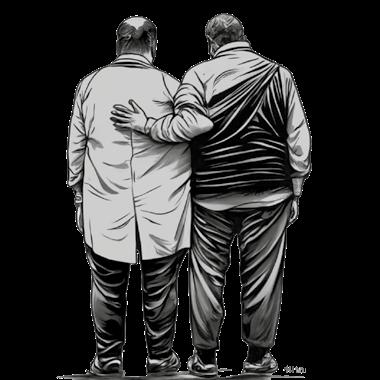
Disconnection with others: Our relationships with others can help us regulate our pain. For example, sharing our problems, receiving and giving care, laughing, and sharing intimacy can help us manage our pain.
Societal norms that encourage men to be independent, cope alone, and keep their struggles and feelings to themselves may prevent some men from effectively managing their pain through social connections.
The impact of cultural norms of masculinity on men’s emotions, sense of self, and relationships with others may increase their exposure to pain and undermine their tools to regulate that pain.


DENIAL, DISCONNECTION, DYSREGULATION
Relationship
with emotions

Relationship
with self



Relationships with others
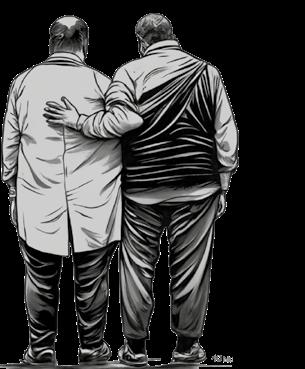
52
3.
pain
Rising
3. What signs might indicate the threshold for how much pain a man can endure is in danger of being breached?
The spectrum of stories in our review suggests that suicidal behaviour in men is extremely diverse. As such, suicide risk can present differently in different men. Therefore, it can be challenging to know when someone’s threshold for tolerating pain is in danger of being breached.
Suicidal thoughts were reported as frightening to some men and freeing to others. Warning signs of advanced suicidal despair were described as presenting in some men as an escalation in distress, in others as the sudden emergence of calmness and serenity.
The psychological pain referenced at the point of suicidal action was described by some men as “a boiling inside” by others as “a dark emptiness”. Some men described their suicide attempt as frightening and a distressing loss of control. Other men reported peace and calm during their attempt.
Suicides were described as unforeseen with no apparent previous warning of distress, or in other cases, suicides followed a long history of profound struggles.
Some men described their suicide attempt as a wake-up call and suggested that they were relieved it didn’t work. Other men reported being upset to be still alive and stated that their attempt only strengthened their resolve to try again.
The level of planning and impulsivity in attempts also appeared to differ. Some men referenced planning their suicide for years. Other men said they thought about suicide for a few minutes
before attempting. Some men disclosed suicidal plans to loved ones, but on the eve of their death, gave reassurances to significant others that they would not go through with them.
This diversity of stories suggests that establishing suicide risk signs that will be true for all men is very difficult.
However, in some studies, we did notice common descriptions of what men’s state of mind seemed to be like when their suicidal pain was at its most intense. Some men talked about how exhausting it was to live with their thoughts of suicide. Men said they experienced panic, decision-making trouble, sleep issues, anxiety, and exhaustion. These descriptions suggest that when pain reaches a certain size, and someone feels full of pain, it can start to impact other body parts and functions - like sleep, memory, energy, concentration, body pains, headaches, and attention.
Similarly, we found common themes relating to the potential drivers of suicide itself, which were most commonly described as a response to overwhelming pain - hopelessness, defeat and entrapment; feelings of failure; loneliness and isolation, or following a relationship conflicts or breakdowns.
53
UNIVERSAL DRIVERS OF SUICIDAL PAIN?
Suicidal pain is a shared human experience. Though men die by suicide at higher rates, people of all genders experience suicidal pain.
Some of the studies in our sample included both men and women who were suicidal.
We saw evidence of denial, disconnection, and dysregulation of emotions, self, and relationships in these studies, too.
Our findings suggest the possibility that the relationship people who are suicidal have with their emotions, self, and others, may underpin aspects of suicidal pain - irrespective of gender.
Let’s explore these potentially universal drivers of suicide in more detail.
54
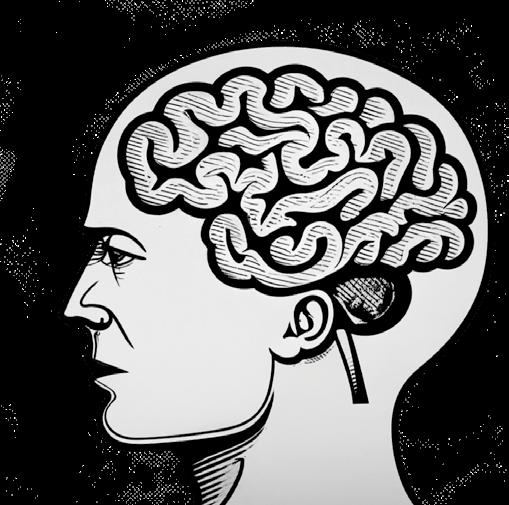

Imagine that every person is their own planet.

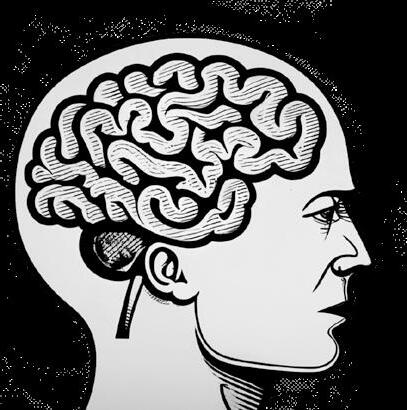

At the centre of the Earth - in the Earth’s inner core - are chemical elements that are extremely hot, volatile, and dangerous.
Imagine that at the core of every person, is their tank of psychological pain.
The contents of each person’s pain tank are unique.
Some people may have lost a loved one, or be struggling with addiction, facing abuse, or going through a divorce.
Suicide research cannot predict the exact pain that every person who is suicidal may have endured.
What we do know is that this pain can be a very dangerous and volatile force if not managed properly.
55
ain tank p
Tectonic plates
Wrapped around the Earth’s inner core are tectonic plates that hold the planet together. These plates are in constant motion and can sometimes bump against each other, causing earthquakes.

sychological tectonic plates p Self
Imagine that every human has a set of psychological tectonic plates that enable us to function and hold our lives together.
Imagine some of these tectonic plates are our emotions, thoughts and feelings about ourselves, and relationships with others.
Processing our feelings, feeling good about ourselves, and building meaningful relationships can help people of all genders live well.
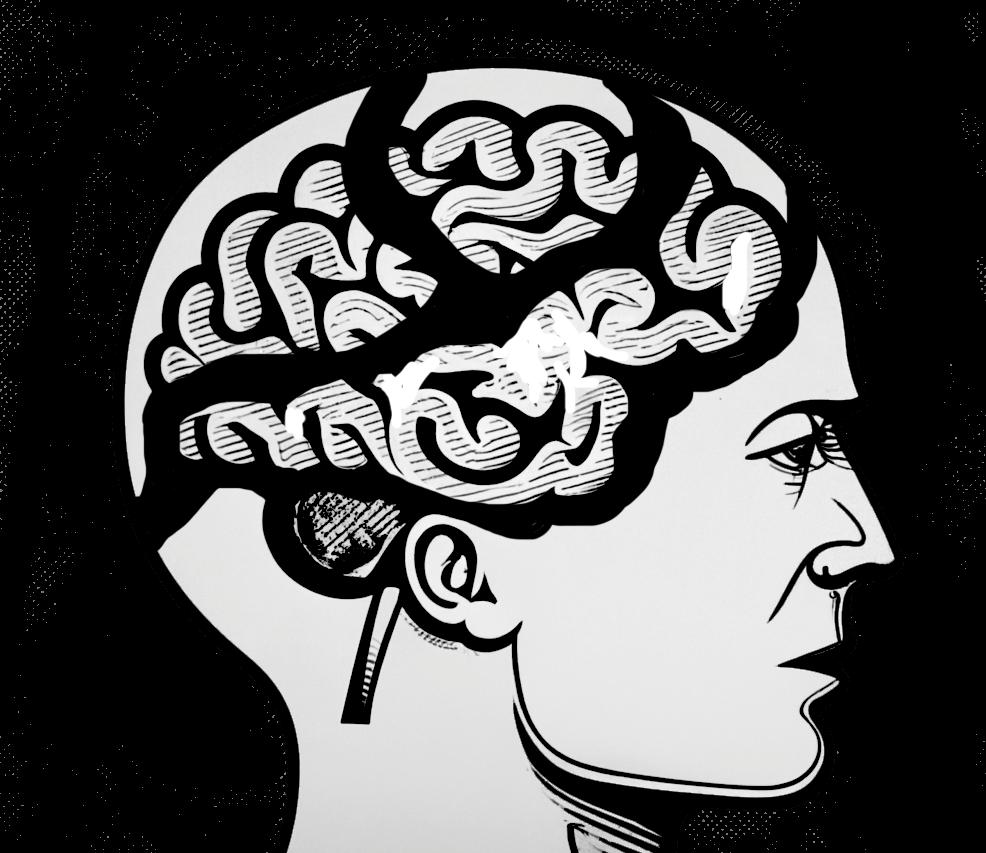
Painful experiences can start to impact the functioning of our tectonic plates.
Negative experiences, like bullying, can affect our emotions, self-esteem, and relationships.
Our psychological tectonic plates also interact and are in constant motion.
Emotions
Relationships
Tremors in one tectonic plate, i.e. emotions, may trigger tremors in others.
Imagine that continuous tremors could build to a psycholgoical earthquake such as a sucidal crisis.
56
Our findings suggest that our relationship with our emotions, self, and others, may represent core psychological tectonic plates.
The healthy functioning of these plates can help us live well.
Experiences that cause us pain can impact the regulation of these tectonic plates for both men and women who are suicidal.
Dysregulation in these plates may lead to a build up of psychological pain.
Too much dysregulated psychological pain may trigger a suicidal crisis.

Emotions


Relationships

While we cannot predict the contents of each person’s psychological pain tank, our findings suggest that dysregulation in our psychological tectonic plates of emotions, self, and relationships may be a universal driver of suicidal pain for people of all genders.
However, in some societies, the risk for men may be elevated, due to specific cultural pressures.


57
Self
ain tank p
CULTURE & SUICIDE RISK

Our findings suggest that cultures may play a critical role in relation to suicide risk.
Cultures sculpt our psychological clay in different ways according to ideas and expectations for how different people should behave - particularly men and women.
This process of cultural sculpting may mean some men and women develop different strengths and weaknesses in their psychological forms.
For example, certain cultures that expect men to suppress their vulnerability may sculpt men’s emotional clay in a way that could harm some men’s ability to regulate their emotions effectively.
Cultural norms differ worldwide, so what is true for one community, is not true for another.
Evidence from a study in China found that women in rural communities were at higher risk of suicide because of cultural norms for women to suppress their feelings and have fewer connections with other people (Sun & Zhang, 2019).
We suggest that certain masculine norms may increase men’s baseline suicide risk in cultures with unhelpful ideas about male behaviour.
This may lead to increased denial, disconnection, and dysregulation for these men in their psychological tectonic plates of emotions, self, and relationships with others.

It’s important to remember that many other crucial factors - like genetics, personality, and hormones - influence suicide risk.
We’re not saying masculine norms explain male suicide risk completely. Far from it.
For example, our findings cannot account for how much of men’s behaviour may be driven by biological factors, and biological differences between men and women.
Self-reliance in men may increase suicide risk, but we cannot account for how much men are selfreliant as an innate biological impulse versus the influence of cultural norms for men to be so.
However, our findings suggest it is important to take seriously the role that culture may play.
Each man who is suicidal will have his own unique relationship with his emotions, self, and others, shaped by his specific biology, life history, and cultural environment.
Understanding suicide risk may be partly about understanding how an individual regulates these core tectonic plates and what skills they need to regulate them more effectively.
58
To understand suicide risk, it may be important to ask:
In this community or culture, how are different people taught to connect with and regulate their emotions, relationships with self and connections with others?
What cultural permissions are people given about expressing their emotions?
What cultural stories are people told about what makes a man or woman socially valuable?
What cultural ideas are people given about how men and women should build relationships?
59
EVOLUTION & SUICIDE RISK
Why do certain risk factors cause someone so much pain they want to die?
Exploring our psychological evolution can help us understand this vital question.
Tracing the potential roots for how certain risk factors, such as emotional dysregulation, negative feelings towards self, and isolation could be so distressing that they contribute to the decision to end one’s life.
Humans are the result of an incredibly long process of evolution that stretches back billions of years.
Over that history, it is possible that our emotions, relationship with self, and connections with others became critical to human survival and flourishing.
Consequently, too much pain in these psychological areas may be very dangerous for a person’s well-being.


THE EVOLUTION OF OUR NEED FOR CONNECTION


Humans are a deeply social species.
Relationships with others
A baby born alone would not survive. Creating social bonds with other people - to care about people and be cared for in return - may have been an important part of our evolutionary survival.
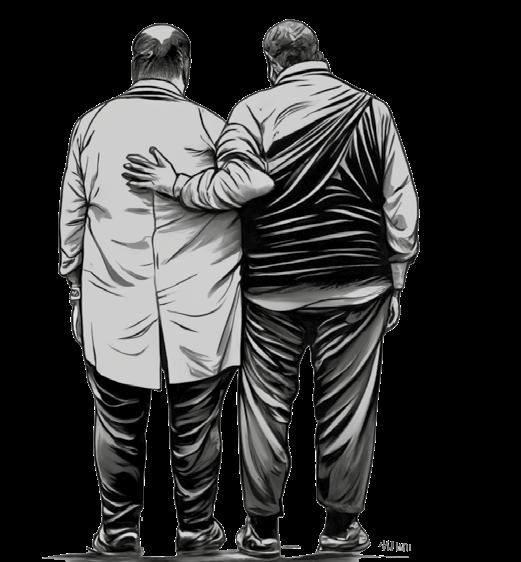
As we explored earlier, psychological pain may have had evolutionary importance in helping us to know when we were in social danger.
Using biological pain systems to sound an alarm when we are in social danger may have helped our ancestors regulate their behaviour to maintain social safety.
However, it may have left humans vulnerable to feeling so much psychological pain that they can’t bear it anymore, and think of suicide as a way to escape or end their distress.
As such, our ability to create meaningful social bonds may have been vital for human evolution, and a lack of such bonds may be extremely painful.
Modern cultures that encourage men to be independent, self-reliant, and emotionally cutoff from people, may deprive certain men of important aspects of the social connection, belonging, and support, that most humans may need.
61
THE EVOLUTION OF OUR EMOTIONS


Relationship with emotions
Our feelings and emotions have had an important role to play in our evolutionary history.
Emotions are like a compass. They help us work out if something feels good and we want to move towards it and have more of it, or if something feels bad and we want to avoid it. Emotions help us care about others, to protect and love them. Emotions help give our lives meaning and purpose.
Emotions are also an extremely powerful force.
When we feel too many unpleasant things, it can be unbearable.

Being able to identify and manage our emotions is an important aspect of regulating psychological pain and transforming it into something less painful.
Emotions have been evolving inside of humans for a very long time.
Cultures that teach certain people to deny and disconnect from their emotions may restrict people from accessing a fundamental part of their humanity and endanger their well-being by not giving them healthy opportunities to learn to regulate their feelings.
62
THE EVOLUTION OF OUR SELFHOODS


At some point in history, humans developed an awareness of themselves as individuals.
Relationship with self

I am aware that I am a human being, alive on this planet in this present moment, and so are you.
This awareness of ourselves comes with emotions - we can feel good or bad about ourselves. These feelings can vary; we might be proud of some things about ourselves and feel ashamed of others.
We are also aware that other people may have their own thoughts and feelings about us, too, which may be good or bad.
Why did this sense of ‘self’ develop in humans, and how did it help us?
Some experts believe that having a sense of ‘self’ helps us take control of our actions and plan better for the future. It may also have made us more effective in social groups. Being a useful member of a group can boost your status and importance.
Conversely, having a negative view of yourself, feeling like you have little control, or thinking you’re a failure can be psychologically painful. From an evolutionary point of view, these feelings could harm our ability to function well and lead a fulfilling life.
These ideas are speculative and require much more rigorous investigation. There will be many potential factors for the evolutionary value of human emotions, selfhood, and connections with others. This brief sketch, however, illustrates the potential importance of these psychological tectonic plates to human well-being and why their dysregulation may be related to suicide.
63
RISK FACTORS
PUTTING IT ALL TOGETHER...
Let's bring all that we've learnt about male suicide risk factors together and see what it helps us explain.
Remember - other factors contribute to suicide risk - these are just the main findings from our study about the role of cultural norms of masculinity in male suicide risk.
64
65
CULTURAL NORMS OF MASCULINITY & MALE SUICIDE RISK
DISTANT RISK: CULTURAL NORMS OF MASCULINITY



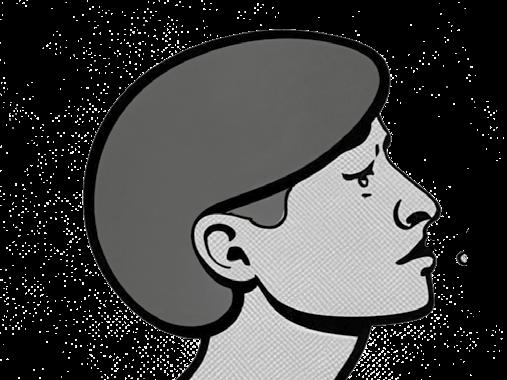

Cultural norms can help shape our relationship with our emotions, self, and others. Our findings suggest certain cultural norms of masculinity may harm some men in the following areas:
EMOTIONS
Norms of male emotional suppression
• Emotional suppression and dysregulation
• Childhood challenges impact emotional development
• Getting help is seen as weak
• Negative experiences accessing help
SELF
Failing to meet norms of male success
• Feeling like a failure
• Pretending to be fine
• Low self-esteem from childhood
RELATIONSHIPS
Norms that suppress men's relationship needs
• Loneliness and isolation
• Relationship challenges and conflict
• Struggling to trust
66
1.
DYSREGULATED PSYCHOLOGICAL PAIN
Cultural norms may mean some men experience denial, disconnection, and dysregulation in their emotions, thoughts and feelings about self, and their relationships with others. The interaction of these harms may increase some men's psychological pain, and suicide risk.

EMOTIONS


RELATIONSHIPS





IMMEDIATE RISK: UNBEARABLE PSYCHOLOGICAL PAIN
Too much unregulated psychological pain is understood to be a key driver of suicidal action. In our study, suicidal behaviours were described as driven by the following:
EMOTIONS
• Suicide as a release from pain
SELF
• Suicide as the killing of a failed self
• Suicide as regaining control
RELATIONSHIPS
• Suicide associated with relationship struggles
• Suicide as a release from unbearable isolation
• Suicide associated with feeling a burden
• Signs of suicide are difficult to read
67
SELF Denial Disconnection Dysregulation
2. 3. Rising pain
RECOVERY FACTORS
REGULATING
PSYCHOLOGICAL PAIN & REDUCING SUICIDE RISK
We also reviewed the 78 studies for evidence of what helps men recover and build a more meaningful life.
In principle, this recovery was about learning to recognise, reconnect with, and regulate the areas of their lives that had gotten out of control.
Developing a knowledge of and connection with their emotions, helped men to manage and control their feelings. Repairing self-esteem and learning to understand themselves beyond simple markers of success or failure seemed to help men see themselves differently and more compassionately. Building close connections with others seemed to help ground some men’s lives in care and meaning.

68
REGULATING PSYCHOLOGICAL PAIN

1.
Relationship with emotions

2.
Relationship with self


3.
Relationships with others



Recognition
Reconnection
Regulation
69
REGULATING PSYCHOLOGICAL PAIN
In 78% of studies, men seemed to manage their psychological pain through learning to recognise, reconnect, and regulate their emotions, ideas of self, and connections with others.
KEY FINDINGS
1. Emotional regulation and control
2. Support from peers and expanding ideas of male selves
3. Care and connection
4. Being respected and valued by professionals
5. Understanding suicidal pain beyond mental illness
Regulating psychological pain

70
1. Emotional regulation.
In 47% of studies, men described that learning to understand and reconnect with their feelings, helped them manage their emotional pain, and thoughts of suicide.
Learning to acknowledge and talk about their problems and emotions, figuring out what triggered their distress, exploring their past experiences and how they shaped them - these things seemed to give some men a sense of control over their lives and helped them deal with thoughts of suicide, make some peace with their pasts, and create a new sense of self-worth.
Feelings and pain that had previously felt unmanageable were gradually brought under control.
A young Australian man who attempted suicide twice, and had a negative experience with one professional who framed his distress as mental illness, eventually found support from a psychologist whose person-centered approach appeared to help him: “I felt better instantly because, for no other reason than, I had someone I could talk to, share feelings.” (River, 2018, p. 154)
Findings also suggested that it was important for men to explore how their ideas of masculinity may influence their thought patterns and feelings about themselves - especially around feelings of failure and shame, and their relationship with their emotions.
Learning to broaden their understanding of what it means to be a man seemed to help some men
Emotional regulation and control through:
Acknowledging and talking about problems and emotions
Understanding triggers for stress and distress
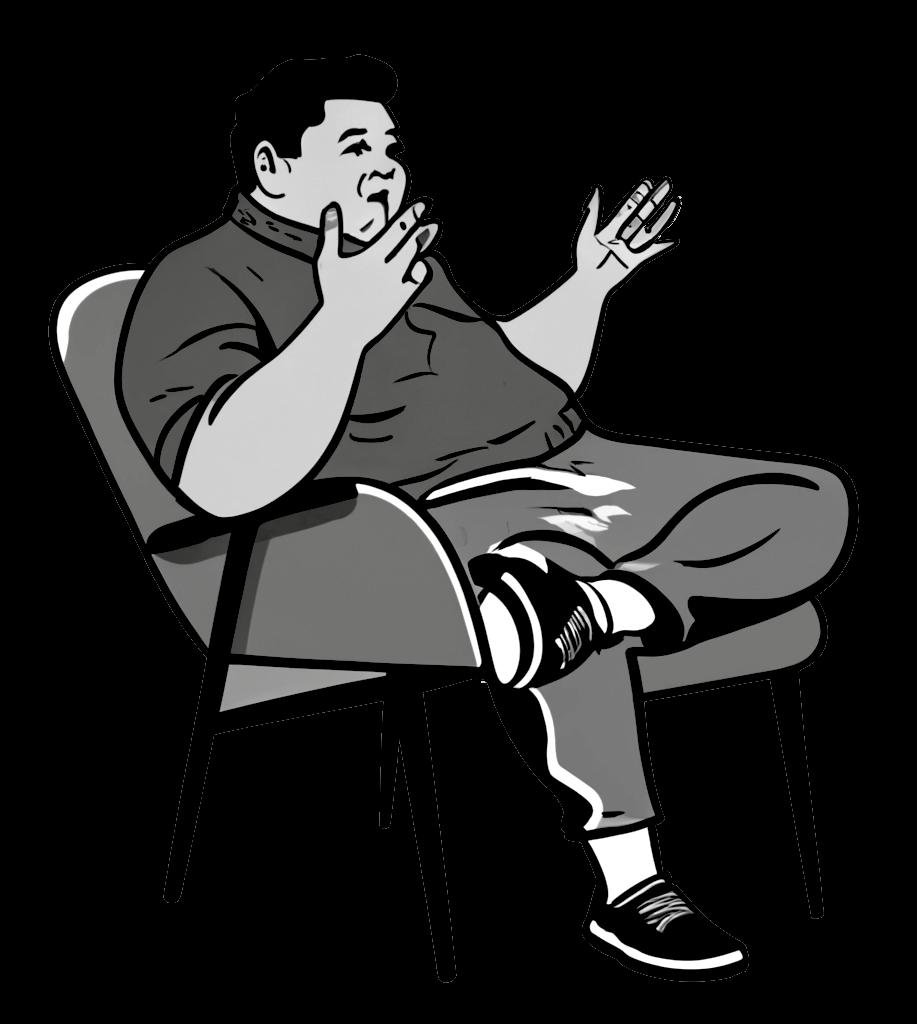
Exploring past experiences and their impact
71
reshape their identity and their sense of value to society and others.
A 38-year-old Australian man who attempted suicide remarked: “I hope that I can disable this narrative of failure which has become, as my psychologist said yesterday, more or less self–fulfilling.” (Fitzpatrick, 2014, p. 154)
2. Peer support and expanding ideas about what it means to be a man.
In 24% of studies, men described the importance of talking with other people who had also experienced suicidal thoughts and tried to end their lives.
Men appeared to find solace in peer-support groups where they could share their own stories and listen to others who had similar experiences. These encounters seemed to help men develop a broader perspective on masculinity.
A man in his sixties who had survived sexual abuse said: “I was very well received by my male buddies who had been through the same and it was just great to be able to do this [disclosure] at this time because it’s a great positive energy that gushes forth following disclosure. Then there was always the hope that I would survive like those who had been through the same and they survived!” (p. 1001, Tryggvadottir, Sigurdardottir & Halldorsdottir, 2019)
Men who had learnt to live with thoughts of suicide and were rebuilding meaningful lives served as role models, showing other men that hope for a better future was possible, and that their struggles were not uniquely condemning of them as individual men, but something other men experienced, and had found ways to deal with.
Some men talked about how important it was for them also to be able to help others through
The power of peer support:

72 Normalise struggles Build hope Create connections Selfacceptance Broaden ideas of masculinity
sharing their experiences or through volunteering. These activities seemed to give some men a sense of worth and purpose.
People also spoke of the importance of broadening societal ideas of masculinity.
On a personal level, friends and family said they felt it was important that in relationships, we normalised men talking about their problems and struggling as other people might.
A father in Canada, whose son died by suicide, remarked how he wished he had displayed more of his own vulnerability: “I didn’t think about all the stuff that I could have taught him. “What would I handle differently?” It would be about vulnerability for myself.” (Oliffe et al., 2018, p. 1387)
At a broader level, people spoke of how important it was for society to represent and celebrate different expressions of masculinity, to normalise men talking, and that being a man can mean many different things and isn’t just about one fixed set of ideas.
3. Re-connecting with others.
In 32% of studies, men talked about the importance of deepening connections with significant others and/or developing new, meaningful relationships.
The strengthening of these bonds seemed to give men purpose and increased their desire to live. These connections were often with family, as well as friends, partners, peers, teachers, and faith.
A man from a Swedish study, admitted to a psychiatric unit for his suicide risk, commented: “I have learnt that I have great social needs and that it is easier to handle yourself if you have friends and relatives.” (Sellin et al., 2017, p. 204)
4. Caring professionals
In 19% of studies, men spoke of the importance of caring, understanding, and non-judgemental professionals, who listened and treated them with dignity and as people worthy of receiving care and attention.
A young man in an Irish study spoke of the difference a mental health professional made: “Honestly? He listened to me. He heard what I was saying.” (Jordan et al., 2012, p. 1211)
5. Understanding suicidal pain beyond mental illness.
In nearly one-third of the studies (31%), participants and researchers talked about the importance of looking at suicidal feelings and actions from a broader perspective, not just as an individual mental health issue.
Suicidal thoughts and behaviours can be influenced by many factors including genes, hormones, living conditions, personal trauma, cultural beliefs, political situations, financial and educational opportunities.
All these factors and more play a role in shaping why some men might feel suicidal.
Rather than thinking of suicide as a purely medical issue, we need to place a person’s suicidal pain in a broader context and explore all the factors that might contribute to a person’s despair.
An Australian man who perceived his suicide attempt as driven by a lack of secure and fulfilling work, and who was told by a psychologist that he was depressed, spoke of his anger at this response: “that really pisses me off, because there are a lot of people out there really struggling and just being classed as depressive.” (River, 2018, p. 154)
73
REGULATING PSYCHOLOGICAL PAIN & MALE SUICIDE RECOVERY
Learning to recognise, reconnect with, and regulate the areas of their lives that had gotten out of control seemed to help men cope with their suicidal pain. Simply put, learning to regulate their emotions, thoughts and feelings about themselves, and strengthen relationships with others appeared to help some men regulate their psychological pain.
1.
Relationship with emotions

Developing a knowledge of and connection with their emotions, helped some men to manage and control their feelings.
2.
Relationship with self
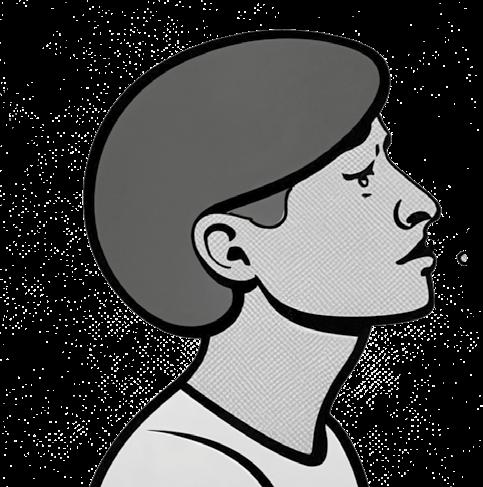
Repairing self-esteem and learning to understand themselves beyond simple markers of success or failure seemed to help men see themselves differently and more compassionately.
3.
Relationships with others

Building important connections with others, helped ground some men’s lives in care and meaning.
Combined, these changes seemed to help some men cope with their pain and prevent it from getting so bad they wanted to end their lives.
74
Recovery seemed to be built on men learning to regulate the areas of their lives that had spiralled out of control.
• Emotional regulation and control
• Peer support and expanding ideas about what it means to be a man
• Care and connection
• Being respected and valued by professionals
• Understanding suicidal pain beyond mental illness
REGULATED PSYCHOLOGICAL PAIN
Recognising, reconnecting with, and regulating emotions, self, and connections with others



EMOTIONS RELATIONSHIPS SELF




Recognition
Reconnection
Regulation
Effective tools to regulate pain and threshold for tolerating pain not breached
75
WHAT NEXT?
RECOMMENDATIONS FOR INTERVENTIONS TO SUPPORT
MEN IN SUICIDAL DESPAIR

76
Suicide is a complex behaviour, and multiple factors can contribute to someone’s distress.
This complexity means there are not always quick solutions to resolving suicidal pain. Instead, it may require tackling challenges bit by bit, taking it one day at a time.
Recovering from a suicidal crisis does not necessarily mean someone will never feel suicidal again.
For some people, it is about learning how to manage their mental health, accepting that thoughts of suicide may come, but recognising that they are temporary and developing strategies to cope with them.
Recovery can be a long-term process, sometimes requiring interventions from various sources at different times.
Similarly, some help-seeking experiences may be negative because of long waiting lists, a lack of services, or a lack of connection with some staff.
Seeking help may require persistence and resilience while healthcare systems are strengthened to become better fit for purpose.
Male suicide prevention is not just about support for at-risk individuals. It also
means help for families, improvements to health services and community responses, and tackling cultural ideas that may be damaging or restrictive to men.
We all have a role to play in creating more compassionate and connected communities.
Further research is required to really understand what works for men in dealing with suicidal pain. However, based on our findings, we make the following preliminary suggestions as key areas to explore:
1. Support for at-risk men
2. Gender sensitive services
3. Training for professionals
4. Significant others
5. Community & peer support
6. Universal interventions
77
1.
SUPPORT FOR AT-RISK MEN
Psychological Support: Evidence from our review suggests that some of the key psychological areas where men who are suicidal may need support are:
Emotions: Support for men to understand, manage, and regulate their emotions and psychological pain.
Ideas of Self: Support for men to challenge and revise negative ideas they have about themselves, especially those related to feeling like they’re failing.
Meaningful connections. Support to help men improve their opportunities and/or ability to connect with others in meaningful ways.
Interventions to support men in these areas may come in different forms, like talking to a therapist or joining support groups. They may happen in clinics or community spaces and we need more research to figure out the best ways to deliver these interventions.
After a Suicide Attempt: Following a suicide attempt, some men can experience intense emotional ups and downs and struggle with a conflicting desire to die while trying to find hope for a better future.
During this period, prioritising safety and stability may be crucial to bring the suicidal crisis under control. Dealing with the deeper issues that may be driving suicidal thoughts and feelings may need to come later in the recovery process.
Studies have shown that safety planning interventions, which focus on coping strategies and social support after a suicide attempt, can be helpful.
Therapeutic Support: Helping men manage their emotional pain is crucial, and can often require personalised, therapeutic support. However, this can be too expensive for some men or inaccessible in areas with long waiting lists for services.
Studies have suggested that self-guided digital therapeutic tools may be useful for men who can’t access traditional therapy, and more research needs to be done to explore this.
Multi-level interventions: Coping better with tough times may involve a mix of different types of help from various sources.
Therapy may help some men manage their suicidal pain, but if men continue to face distressing life conditions - like unemployment or addiction - their psychological pain may persist.
Suicide prevention, therefore, may require tackling other societal factors that can affect a person’s mental health, such as economic pressures.
Every man’s needs will be individual.
Some men might need assistance with alcohol problems alongside therapy so they can manage their emotional pain when they are sober.
Other men might need additional job training or budget management support to improve their economic situation.
78

2. GENDER SENSITIVE SERVICES
Everyone experiences psychological pain, and our distress is unique to us and our lived experiences.
Nonetheless, there may be elements of mental health challenges that are specific to each gender because of the cultural pressures they face. These differences may impact how different genders express their feelings, cope with stress, and seek help.
‘Gender-sensitive’ mental health support recognises these differences and means creating interventions that align with how men want to be supported.
It includes understanding how men make sense of their suicidal pain, what kind of help they want, and recognises how masculine norms may impact how men express their pain, and how other people respond to it.
There is growing evidence to suggest some men who are suicidal are going to get professional support but have negative experiences.
We urgently need to understand what isn’t working and how services can be improved to meet men’s specific needs.
Gender-sensitive services doesn’t mean that all men should be treated the same.
Care should always be tailored to each individual’s specific needs and circumstances. It is important to remember that every man who is dealing with thoughts of suicide is unique.
79
3. TRAINING FOR PROFESSIONALS
Part of delivering gender-sensitive care will be ensuring professionals are properly trained to create compassionate and safe environments for men who are suicidal.
For example, feelings of shame have been linked to suicide, and it’s important that masculinity is not characterised as something negative or harmful when working with men who are struggling.
Our findings support previous evidence that professionals should receive training in working with men who are suicidal, including exploring their own potential gender bias, and learning how norms of masculinity can affect some men’s mental health and presentations of distress.
For example, some men may describe their mental pain via physical symptoms such as headaches and body pain rather than talking about their feelings.
Other men socialised to hide their struggles may find talking to a professional and seeking help a vulnerable experience at first. Some men’s self-esteem may be so low, they don’t feel they deserve help. Other men may not have had much education in understanding and managing their emotions due to cultural factors and may be hesitant initially in finding words to describe their feelings.
Time-pressured and medically focused appointments may make some men feel uncomfortable and out of control.
Supporting professionals to be more aware and understanding of the specific needs of men who are suicidal could help ensure more effective, trusting, and respectful dynamics.

80
4. SIGNIFICANT OTHERS
Family, friends, and peers can play a crucial role in helping some men cope during a suicidal crisis.
In our review, some men described how the love, support, and acceptance of significant others, was at times, more powerful and beneficial than help from mental health professionals.
Our relationships with loved ones can be complicated. Sometimes, there are difficult aspects to our dynamics with people we love very much, or, a complicated shared history that may contribute to the pain we feel.
Similarly, friends and family may experience their own emotional turmoil following the suicide attempt of a loved one.
Therapy that includes both the person at risk and their loved ones may help everyone address past pain, process the situation, and find a positive way forward.
Family and friends are often the first to notice changes in the behaviour of men that may indicate a potential suicidal crisis. Mental health professionals may need to balance patient confidentiality with taking the concerns of loved ones seriously.
Significant others may also need better information on male suicide risk and recovery factors and how to take care of their own mental health when supporting a loved one in a suicidal crisis.

5. COMMUNITY & PEER SUPPORT
Some men may feel more comfortable seeking support outside of medical and clinical settings.
Our review suggests that male suicide prevention efforts should empower community interventions led by regular people who want to do something to help and may have stronger connections and credibility with certain men.
There’s a growing movement of community responses to support men’s mental health - from talking clubs, to boxing and football groups, and dog walking clubs.
Many people are finding their own solutions to help those in suicidal pain.
Peer support, where individuals who have experienced similar struggles help one another, has been recognised as an important resource for some men.
In our findings, talking to others who have experienced suicidal thoughts didn’t carry the stigma or power imbalances sometimes felt when contacting helplines or in sessions with professionals.
In our review, men also described volunteering as a healing experience, and creating opportunities for men who are suicidal to give back and support and connect to others, may be useful.

82
6. UNIVERSAL INTERVENTIONS
Universal interventions target entire populations - not just individuals at risk - and are a way for all of us to help collectively build psychologically safer communities.
Expanding ideas of masculinity: Cultural norms of masculinity influence everyone, irrespective of gender. We have all been socialised in masculine norms, and to some extent, they can influence our relationships with men, and our expectations of male behaviour.
It’s important, therefore, that everyone examines how these expectations may limit some men’s options and increase male isolation.
Male suicide is not a problem for men to fix alone, but something that will require collective effort, openness, and compassion from all of us.
We need richer representations of masculinity in our societies and cultures.
We need to acknowledge and understand men as individuals, with unique lived experiences, struggles, pain, trauma, and complex identities.
We need to value men as emotional beings, who share a universal human need for meaningful connection.
We should strive to normalise male vulnerability and promote healthy coping mechanisms.
We must be cautious not to perpetuate shame or rigid stereotypes of masculinity.
While actively challenging harmful norms and practices we should also acknowledge and celebrate the positive aspects of masculinity and the valuable contributions made by men to our societies.


Suicide and Mental Health Education: In our review, we identified potential risk factors relating to men’s relationship with their emotions, self, and connections with others.
Teaching people from an early age about these psychological phenomena, and how to regulate them may also be helpful.
Similarly, teaching the public about male suicide risk factors, the potential impact of certain masculine norms on men’s psychological pain, how to talk about suicide, and how to respond when someone discloses suicidal thoughts and help them manage long-term crises could be very helpful.
Expanding our understanding of suicide: Suicidal pain has often been understood as a sign of mental illness. Many people in our review disagreed with this idea.
Some men were discouraged from seeking professional help because they didn’t want their pain labeled as a medical issue.
While medication, and being diagnosed with a mental illness, can be helpful and valuable to some men, we also may need a broader understanding of psychological pain, mental health, and suicide - one that considers how
individuals themselves understand the causes of their distress. It’s crucial to consider the broader context of people’s lives and the social, economic and cultural factors that can contribute to psychological pain.
When a man is struggling with thoughts of suicide, he might have a mental health problem, but we also need to consider other factors like his finances, relationships, upbringing, and more.
All of these aspects can contribute to his unbearable emotional pain.
Society has often treated people who think about suicide as mentally ill and ignored the broader social, economic, and cultural factors that can contribute to someone’s emotional distress. However, to understand suicidal pain we have to place it in the context of people’s lives and lived reality.




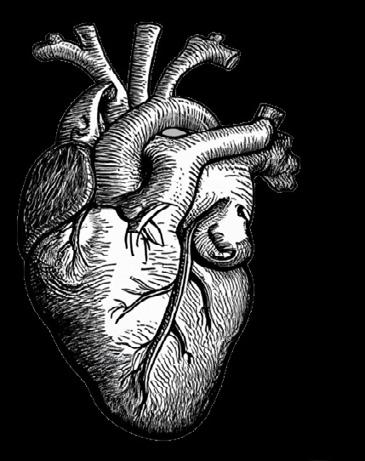

85
CLOSING THOUGHTS

Male suicide rates indicate an alarming number of men struggle to regulate their pain and establish meaningful and fulfilling lives in our modern world.
Our research suggests that when it comes to preventing male suicide, we must consider how cultural expectations of male behaviour can shape how certain men think and feel about themselves, how they conduct their relationships, how they handle their emotions, and how others respond to their distress.
At the same time, we must remember that each man is an individual woven from the fabric of their unique history, lived experiences, and biology.
The complexity of suicide means there are no easy solutions.
Suicide is like an orchestra producing a symphony of sorrow. Every human life carries its own melody.
We can’t look at an orchestra and say it
is the violin player in the 5th row that produces the sound. The sound is made by all the different instruments in interaction.
The same is true of suicide.
Each symphony of sorrow is produced by multiple risk factors in interaction.
Suicide researchers cannot predict the notes that the violin player in the 5th row of every symphony of sorrow plays.
What we can start to hypothesise is the general rhythm and melody of different sections of the orchestra.
This is what our findings suggest - that the strings, the brass, and percussion section of the orchestra of suicide may be our relationship with our emotions, feelings towards self, and connections with others,

and the symphony of the sorrow they produce may happen in interaction with one another, as well as other risk factors.
Masculine norms may increase men’s baseline risk in locations with clear ideas about male behaviour that may lead to increased denial, disconnection, and dysregulation in these psychological areas.
There is an enormous amount of work to be done to tackle the male suicide crisisfrom providing better individual support for men at-risk, to changing the ideas at the core of our cultures, to tackling social ills like unemployment, homelessness, and addiction.
Everything that can cause someone psychological pain is a space where suicide prevention can exist.
The possibility of contributing to suicide prevention is, therefore, everywhere.
We have all been socialised in masculine norms. We all have a role to play in examining how these ideas may contribute to harm for some men.
We can each contribute towards making the relationships we share, and the environments we inhabit, ones which are psychologically safer for men.
The men on the cusp of existence have much to teach us about what matters in life. This is not to diminish the brutality of the pain they hold but to allow space also to acknowledge the beauty of the wisdom they can carry.
By listening to what men who are suicidal see and feel, what they value, crave, and yearn for, I believe we can learn so much about what makes life meaningful.
Creating a more gender-equitable world, will require recognising and changing the harmful cultural expectations that can affect all people, particularly men who are suicidal.
As we engage with important conversations about how to create a more socially just world, we need to make sure we include a space to openly, compassionately, and honestly discuss what it’s like to be a man in our modern worlds and the things we can collectively change to ease pressures on men and boys.
I hope this research can make some contribution towards that. You can read the original study here.
Dr Susanna Bennett s.bennett.2@research.gla.ac.uk
The research was supported by funding from the following charities: Jonathan’s Voice (Charity number: 1180424) and The Liam Britton Foundation (Charity number: 1166009).
LIAM BRITTON FOUNDATION
The Liam Britton Foundation was set up in loving memory of Liam, who sadly passed away in 2014.
The Foundation aims to raise awareness of the mental health challenges leading to suicide.
Through research, we want to help create a deeper understanding of suicide risk and recovery factors, dismantle mental health stigma, and build empathy and compassion for the challenges faced by people in suicidal pain.
To find out more visit: facebook.com/liambrittonfoundation/ liambrittonfoundation/




88
JONATHAN’S VOICE
Jonathan’s Voice is a mental health charity, set up in 2017 in the memory of Jonathan McCartney who tragically took his own life that year. Our charity has three core aims:
• To increase the understanding of mental health and suicide risk for the purposes of reducing stigma and empowering individuals to speak about mental health, including knowing how to respond.
• To educate organisations, especially in the professional environment, for the purpose of encouraging them to create the right support structures, policies and practice

to support employees with mental health and well-being.
• To support research into suicide. The research explores male suicide, specifically the cultural and social factors that put men at risk of suicidal despair and the factors that can aid men to recover a meaningful life.
To find out more about Jonathan’s story, the work of Jonathan’s Voice and to get in touch please visit us at jonathansvoice.org.uk

89
REFERENCES
Akotia, C. S., Knizek, B. L., Hjelmeland, H., Kinyanda, E., & Osafo, J. (2019). Reasons for attempting suicide: An exploratory study in Ghana. Transcultural Psychiatry, 56(1), 233–249. https://doi.org/10.1177/1363461518802966
Akotia, C. S., Knizek, B. L., Kinyanda, E., & Hjelmeland, H. (2014). “I have sinned”: Understanding the role of religion in the experiences of suicide attempters in Ghana. Mental Health, Religion and Culture, 17(5), 437–448. https://doi.org/10.1080/1367467 6.2013.829426
Andoh-Arthur, J., Knizek, B. L., Osafo, J., & Hjelmeland, H. (2018). Suicide among men in Ghana: The burden of masculinity. Death Studies, 42(10), 658–666. https://doi.org/10.1080/07481187.2018.1426655
Bell, J., Stanley, N., Mallon, S., & Manthorpe, J. (2010). The role of perfectionism in student suicide: Three case studies from the UK. Omega: Journal of Death and Dying, 61(3), 251–267. https://doi.org/10.2190/OM.61.3.e
Benson, O., Gibson, S., Boden, Z. V. R., & Owen, G. (2016). Exhausted without trust and inherent worth: A model of the suicide process based on experiential accounts. Social Science and Medicine, 163, 126–134. https://doi.org/10.1016/j.socscimed.2016.06.045
Biong, S., & Ravndal, E. (2007). Young men’s experiences of living with substance abuse and suicidal behaviour: Between death as an escape from pain and the hope of a life. International Journal of Qualitative Studies on Health and Well-Being, 2(4), 246–259. https://doi.org/10.1080/17482620701547008
Biong, S., & Ravndal, E. (2009). Living in a maze: Health, well-being and coping in young non-western men in Scandinavia experiencing substance abuse and suicidal behaviour. International Journal of Qualitative Studies on Health and Well-Being, 4(1), 4–16. https://doi.org/10.1080/17482620802239869
Bonnewyn, A., Shah, A., Bruffaerts, R., Schoevaerts, K., Rober, P., Van Parys, H., & Demyttenaere, K. (2014). Reflections of Older Adults on the Process Preceding Their Suicide Attempt: A Qualitative Approach. Death Studies, 38(9), 612–618. https://doi.org/10. 1080/07481187.2013.835753
Byng, R., Howerton, A., Owens, C. V., & Campbell, J. (2015). Pathways to suicide attempts among male offenders: The role of agency. Sociology of Health and Illness, 37(6), 936–951. https://doi.org/10.1111/1467-9566.12259
Cavalcante, F. G., & De Minayo, M. C. S. (2015). Qualitative study on suicide attempts and ideations with 60 elderly in Brazil. Ciencia e Saude Coletiva, 20(6), 1655–1666. https://doi.org/10.1590/1413-81232015206.06462015
Chung, I. W., Caine, E. D., Barron, C. T., Badaracco, M. A., I.W., C., E.D., C., … Badaracco, M. A. (2015). Clinical and Psychosocial Profiles of Asian Immigrants Who Repeatedly Attempt Suicide: A Mixed-Method Study of Risk and Protective Factors. Crisis, 36(5), 353–362. https://doi.org/https://dx.doi.org/10.1027/0227-5910/a000334
Cleary, A. (2005). Death rather than disclosure: Struggling to be a real man. Irish Journal of Sociology, 14(2), 155–176. https://doi. org/10.1177/079160350501400209
Cleary, A. (2012). Suicidal action, emotional expression, and the performance of masculinities. Social Science and Medicine, 74(4), 498–505. https://doi.org/10.1016/j.socscimed.2011.08.002
Coleman, D., Feigelman, W., & Rosen, Z. (2020, April 1). Association of high traditional masculinity and risk of suicide death: Secondary analysis of the Add health study. JAMA Psychiatry. American Medical Association. https://doi.org/10.1001/jamapsychiatry.2019.4702
Costa, A. L. S. da, & Souza, M. L. P. de. (2017, December 11). Narratives of family members on the suicide of older adults in an Amazonian metropolis. Revista de Saude Publica. https://doi.org/10.11606/S1518-8787.2017051007059
Creighton, G., Oliffe, J., Ogrodniczuk, J., & Frank, B. (2017). “You’ve Gotta Be That Tough Crust Exterior Man”: Depression and Suicide in Rural-Based Men. Qualitative Health Research, 27(12), 1882–1891. https://doi.org/10.1177/1049732317718148
Crocker, L., Clare, L., & Evans, K. (2006). Giving up or finding a solution? The experience of attempted suicide in later life. Aging and Mental Health, 10(6), 638–647. https://doi.org/10.1080/13607860600640905
Elliott-Groves, E. (2018). Insights from Cowichan: A Hybrid Approach to Understanding Suicide in One First Nations’ Collective.
90
Suicide and Life-Threatening Behavior, 48(3), 328–339. https://doi.org/10.1111/sltb.12364
Everall, R. D., Bostik, K. E., & Paulson, B. L. (2006, July). Being in the safety zone: Emotional experiences of suicidal adolescents and emerging adults. Journal of Adolescent Research. https://doi.org/10.1177/0743558406289753
Fenaughty, J., & Harré, N. (2003). Life on the Seesaw. Journal of Homosexuality, 45(1), 1–22. https://doi.org/10.1300/ j082v45n01_01
Ferlatte, O., Oliffe, J. L., Louie, D. R., Ridge, D., Broom, A., & Salway, T. (2019). Suicide Prevention From the Perspectives of Gay, Bisexual, and Two-Spirit Men. Qualitative Health Research, 29(8), 1186–1198. https://doi.org/10.1177/1049732318816082
Ferlatte, O., Oliffe, J. L., Salway, T., Broom, A., Bungay, V., & Rice, S. (2019). Using Photovoice to Understand Suicidality Among Gay, Bisexual, and Two-Spirit Men. Archives of Sexual Behavior, 48(5), 1529–1541. https://doi.org/10.1007/s10508-019-1433-6
Fitzpatrick, S. J. (2014). Stories worth telling: moral experiences of suicidal behavior. Narrative Inquiry in Bioethics, 4(2), 147–160. https://doi.org/10.1353/nib.2014.0047
Fogarty, A. S., Spurrier, M., Player, M. J., Wilhelm, K., Whittle, E. L., Shand, F., … Proudfoot, J. (2018). Tensions in perspectives on suicide prevention between men who have attempted suicide and their support networks: Secondary analysis of qualitative data. Health Expectations, 21(1), 261–269. https://doi.org/10.1111/hex.12611
Gajwani, R., Larkin, M., & Jackson, C. (2018). “What is the point of life?”: An interpretative phenomenological analysis of suicide in young menwith first-episode psychosis. Early Intervention in Psychiatry, 12(6), 1120–1127. https://doi.org/10.1111/eip.12425
Ghio, L., Zanelli, E., Gotelli, S., Rossi, P., Natta, W., & Gabrielli, F. (2011). Involving patients who attempt suicide in suicide prevention: A focus groups study. Journal of Psychiatric and Mental Health Nursing, 18(6), 510–518. https://doi.org/10.1111/j.13652850.2011.01697.x
Gutierrez, D. M. D., Sousa, A. B. L., & Grubits, S. (2015). Suicidal ideation and attempted suicide in elderly people – subjective experiences. Ciencia e Saude Coletiva, 20(6), 1731–1740. https://doi.org/10.1590/1413-81232015206.02242015
Hagaman, A. K., Khadka, S., Wutich, A., Lohani, S., & Kohrt, B. A. (2018). Suicide in Nepal: Qualitative Findings from a Modified Case-Series Psychological Autopsy Investigation of Suicide Deaths. Culture, Medicine and Psychiatry, 42(3), 704–734. https://doi. org/10.1007/s11013-018-9585-8
Han, C. S., & Oliffe, J. L. (2015). Korean-Canadian immigrants’ help-seeking and self-management of suicidal behaviours. Canadian Journal of Community Mental Health, 34(1), 17–30. https://doi.org/10.7870/cjcmh-2014-036
Jordan, J., McKenna, H., Keeney, S., Cutcliffe, J., Stevenson, C., Slater, P., & McGowan, I. (2012). Providing meaningful care: Learning from the experiences of suicidal young men. Qualitative Health Research, 22(9), 1207–1219. https://doi. org/10.1177/1049732312450367
Jordan, J. T., & McNiel, D. E. (2020). Characteristics of persons who die on their first suicide attempt: Results from the National Violent Death Reporting System. Psychological Medicine, 50(8), 1390–1397. https://doi.org/10.1017/S0033291719001375
Kaplan, M. S., McFarland, B. H., & Huguet, N. (2009). Characteristics of adult male and female firearm suicide decedents: Findings from the National Violent Death Reporting System. Injury Prevention, 15(5), 322–327. https://doi.org/10.1136/ip.2008.021162
Kiamanesh, P., Dyregrov, K., Haavind, H., & Dieserud, G. (2014). Suicide and perfectionism: A psychological autopsy study of non-clinical suicides. Omega (United States), 69(4), 381–399. https://doi.org/10.2190/OM.69.4.c
Kiamanesh, P., Dieserud, G., & Haavind, H. (2015). From a Cracking Façade to a Total Escape: Maladaptive Perfectionism and Suicide. Death Studies, 39(5), 316–322. https://doi.org/10.1080/07481187.2014.946625
Kiamanesh, P., Dieserud, G., Dyregrov, K., & Haavind, H. (2015, June 1). Maladaptive perfectionism: Understanding the psychological vulnerability to suicide in terms of developmental history. Omega (United States). SAGE Publications Inc. https://doi. org/10.1177/0030222815570592
Kizza, D., Hjelmeland, H., Kinyanda, E., & Knizek, B. L. (2012). Alcohol and suicide in postconflict Northern Uganda: A qualitative psychological autopsy study. Crisis, 33(2), 95–105. https://doi.org/10.1027/0227-5910/a000119
Kizza, D., Knizek, B. L., Kinyanda, E., & Hjelmeland, H. (2012). Men in despair: A qualitative psychological autopsy study of suicide in Northern Uganda. Transcultural Psychiatry, 49(5), 696–717. https://doi.org/10.1177/1363461512459490
Kjølseth, I., Ekeberg, øivind, & Steihaug, S. (2009). “why do they become vulnerable when faced with the challenges of old age?” Elderly people who committed suicide, described by those who knew them. International Psychogeriatrics, 21(5), 903–912. https:// doi.org/10.1017/S1041610209990342
91
Kjlseth, I., Ekeberg, Ø., & Steihaug, S. (2010). Why suicide? Elderly people who committed suicide and their experience of life in the period before their death. International Psychogeriatrics, 22(2), 209–218. https://doi.org/10.1017/S1041610209990949
Knizek, B. L., & Hjelmeland, H. (2018). To die or not to die: A qualitative study of men’s suicidality in Norway. BMC Psychiatry, 18(1). https://doi.org/10.1186/s12888-018-1843-3
Kunde, L., Kõlves, K., Kelly, B., Reddy, P., & de Leo, D. (2018). “The Masks We Wear”: A Qualitative Study of Suicide in Australian Farmers. Journal of Rural Health, 34(3), 254–262. https://doi.org/10.1111/jrh.12290
Laubscher, L. R. (2003). Suicide in a South African town: A cultural psychological investigation. South African Journal of Psychology, 33(3), 133–143. https://doi.org/10.1177/008124630303300301
Lusk, J., Dobscha, S. K., Kopacz, M., Ritchie, M. F., & Ono, S. (2018). Spirituality, Religion, and Suicidality Among Veterans: A Qualitative Study. Archives of Suicide Research, 22(2), 311–326. https://doi.org/10.1080/13811118.2017.1340856
Mackenzie, J. C., Cartwright, T., & Borrill, J. (2018). Exploring suicidal behaviours by probation clients - A qualitative near-lethal study. Journal of Public Health (United Kingdom), 40(1), 146–153. https://doi.org/10.1093/pubmed/fdx005
Mallon, S., Galway, K., Rondon-Sulbaran, J., Hughes, L., & Leavey, G. (2019). When health services are powerless to prevent suicide: results from a linkage study of suicide among men with no service contact in the year prior to death. Primary Health Care Research & Development, 20, e80. https://doi.org/10.1017/S1463423619000057
McAndrew, S., & Warne, T. (2010). Coming out to talk about suicide: Gay men and suicidality. International Journal of Mental Health Nursing, 19(2), 92–101. https://doi.org/10.1111/j.1447-0349.2009.00644.x
Meissner, B. L., & Bantjes, J. (2017). Disconnection, reconnection and autonomy: four young South African men’s experience of attempting suicide. Journal of Youth Studies, 20(7), 781–797. https://doi.org/10.1080/13676261.2016.1273512
Meneghel, S. N., Duran Gutierrez, D. M., da Silva, R. M., Grubits, S., Hesler, L. Z., & Ceccon, R. F. (2012). Suicide in the elderly from a gender perspective. Ciencia e Saude Coletiva, 17(8), 1983–1992. https://doi.org/10.1590/S1413-81232012000800009
Oliffe, J. L., Broom, A., Kelly, M. T., Bottorff, J. L., Creighton, G. M., & Ferlatte, O. (2018). Men on Losing a Male to Suicide: A Gender Analysis. Qualitative Health Research, 28(9), 1383–1394. https://doi.org/10.1177/1049732318769600
Oliffe, J. L., Broom, A., Popa, M., Jenkins, E. K., Rice, S. M., Ferlatte, O., & Rossnagel, E. (2019). Unpacking Social Isolation in Men’s Suicidality. Qualitative Health Research, 29(3), 315–327. https://doi.org/10.1177/1049732318800003
Oliffe, J. L., Creighton, G., Robertson, S., Broom, A., Jenkins, E. K., Ogrodniczuk, J. S., & Ferlatte, O. (2017). Injury, Interiority, and Isolation in Men’s Suicidality. American Journal of Men’s Health, 11(4), 888–899. https://doi.org/10.1177/1557988316679576
Orri M, Paduanello M, Lachal J, Falissard B, Sibeoni J, Revah-Levy A (2014) Qualitative Approach to Attempted Suicide by Adolescents and Young Adults: The (Neglected) Role of Revenge. PLoS ONE 9(5): e96716. https://doi.org/10.1371/journal. pone.0096716
Osafo, J., Akotia, C. S., Andoh-Arthur, J., & Quarshie, E. N. B. (2015). Attempted Suicide in Ghana: Motivation, Stigma, and Coping. Death Studies, 39(5), 274–280. https://doi.org/10.1080/07481187.2014.991955
Owen, G., Belam, J., Lambert, H., Donovan, J., Rapport, F., & Owens, C. (2012). Suicide communication events: Lay interpretation of the communication of suicidal ideation and intent. Social Science and Medicine, 75(2), 419–428. https://doi.org/10.1016/j. socscimed.2012.02.058
Owens, C., Lambert, H., Donovan, J., & Lloyd, K. R. (2005). A qualitative study of help seeking and primary care consultation prior to suicide. British Journal of General Practice, 55(516), 503–509.
Owens, C., Lambert, H., Lloyd, K., & Donovan, J. (2008). Tales of biographical disintegration: How parents make sense of their sons’ suicides. Sociology of Health and Illness, 30(2), 237–254. https://doi.org/10.1111/j.1467-9566.2007.01034.x
Owens, C., Owen, G., Belam, J., Lloyd, K., Rapport, F., Donovan, J., & Lambert, H. (2011). Recognising and responding to suicidal crisis within family and social networks: Qualitative study. BMJ (Online), 343(7828). https://doi.org/10.1136/bmj.d5801
Pavulans, K. S., Bolmsjö, I., Edberg, A. K., & Öjehagen, A. (2012). Being in want of control: Experiences of being on the road to, and making, a suicide attempt. International Journal of Qualitative Studies on Health and Well-Being, 7. https://doi.org/10.3402/ qhw.v7i0.16228
92
Peters, K., Murphy, G., & Jackson, D. (2013). Events prior to completed suicide: Perspectives of family survivors. Issues in Mental Health Nursing, 34(5), 309–316. https://doi.org/10.3109/01612840.2012.751639
Player, M. J., Proudfoot, J., Fogarty, A., Whittle, E., Spurrier, M., Shand, F., … Wilhelm, K. (2015). What interrupts suicide attempts in men: A qualitative study. PLoS ONE, 10(6). https://doi.org/10.1371/journal.pone.0128180
Qin, P., Agerbo, E., & Mortensen, P. B. (2003). Suicide risk in relation to socioeconomic, demographic, psychiatric, and familial factors: A national register-based study of all suicides in Denmark, 1981-1997. American Journal of Psychiatry, 160(4), 765–772. https://doi.org/10.1176/appi.ajp.160.4.765
Rasmussen, M. L., Dyregrov, K., Haavind, H., Leenaars, A. A., & Dieserud, G. (2018). The Role of Self-Esteem in Suicides Among Young Men. Omega (United States), 77(3), 217–239. https://doi.org/10.1177/0030222815601514
Rasmussen, M. L., & Dieserud, G. (2018). Experiences of the bereaved in connection with the suicide of young men. Tidsskrift for Den Norske Legeforening. https://doi.org/10.4045/tidsskr.17.0571
Rasmussen, M. L., Dieserud, G., Dyregrov, K., & Haavind, H. (2014). Warning signs of suicide among young men. Nordic Psychology, 66(3), 153–167. https://doi.org/10.1080/19012276.2014.921576
Rasmussen, M. L., Haavind, H., & Dieserud, G. (2018). Young Men, Masculinities, and Suicide. Archives of Suicide Research, 22(2), 327–343. https://doi.org/10.1080/13811118.2017.1340855
Ribeiro, D. B., Terra, M. G., Soccol, K. L. S., Schneider, J. F., Camillo, L. A., & Plein, F. A. D. S. (2016). Reasons for attempting suicide among men who use alcohol and other drugs. Revista Gaucha de Enfermagem, 37(1), e54896. https://doi.org/10.1590/19831447.2016.01.54896
Richardson, C., Robb, K. A., & O’Connor, R. C. (2021, May 1). A systematic review of suicidal behaviour in men: A narrative synthesis of risk factors. Social Science and Medicine. Elsevier Ltd. https://doi.org/10.1016/j.socscimed.2021.113831
River, J. (2018). Diverse and Dynamic Interactions: A Model of Suicidal Men’s Help Seeking as It Relates to Health Services. American Journal of Men’s Health, 12(1), 150–159. https://doi.org/10.1177/1557988316661486
Rivers, I., Gonzalez, C., Nodin, N., Peel, E., & Tyler, A. (2018). LGBT people and suicidality in youth: A qualitative study of perceptions of risk and protective circumstances. Social Science and Medicine, 212, 1–8. https://doi.org/10.1016/j. socscimed.2018.06.040
Rivlin, A., Fazel, S., Marzano, L., & Hawton, K. (2013). The suicidal process in male prisoners making near-lethal suicide attempts. Psychology, Crime and Law, 19(4), 305–327. https://doi.org/10.1080/1068316X.2011.631540
Rivlin, A., Ferris, R., Marzano, L., Fazel, S., & Hawton, K. (2013). A typology of male prisoners making near-lethal suicide attempts. Crisis, 34(5), 335–347. https://doi.org/10.1027/0227-5910/a000205
Salway, T., & Gesink, D. (2018). Constructing and Expanding Suicide Narratives From Gay Men. Qualitative Health Research, 28(11), 1788–1801. https://doi.org/10.1177/1049732318782432
Sellin, L., Asp, M., Wallsten, T., & Wiklund Gustin, L. (2017). Reconnecting with oneself while struggling between life and death: The phenomenon of recovery as experienced by persons at risk of suicide. International Journal of Mental Health Nursing, 26(2), 200–207. https://doi.org/10.1111/inm.12249
Stanley, N., Mallon, S., Bell, J., & Manthorpe, J. (2009). Trapped in transition: Findings from a UK study of student suicide. British Journal of Guidance and Counselling, 37(4), 419–433. https://doi.org/10.1080/03069880903161427
Strike, C., Rhodes, A. E., Bergmans, Y., & Links, P. (2006). Fragmented pathways to care: The experiences of suicidal men. Crisis, 27(1), 31–38. https://doi.org/10.1027/0227-5910.27.1.31
Sweeney, L., Owens, C., & Malone, K. (2015). Communication and interpretation of emotional distress within the friendships of young Irish men prior to suicide: A qualitative study. Health and Social Care in the Community, 23(2), 150–158. https://doi. org/10.1111/hsc.12124
Sun, L., & Zhang, J. (2019). Factors associated with help-seeking behavior among medically serious attempters aged 15-54 years in rural China. Psychiatry research, 274, 36–41. https://doi.org/10.1016/j.psychres.2019.02.024
Tang, S., Reily, N. M., Arena, A. F., Batterham, P. J., Calear, A. L., Carter, G. L., … Christensen, H. (2022, January 18). People
93
who die by suicide without receiving mental health services: A systematic review. Frontiers in Public Health. Frontiers Media S.A. https://doi.org/10.3389/fpubh.2021.736948
Tryggvadottir, E. D. V., Sigurdardottir, S., & Halldorsdottir, S. (2019). ‘The self-destruction force is so strong’: male survivors’ experience of suicidal thoughts following sexual violence. Scandinavian Journal of Caring Sciences, 33(4), 995–1005. https://doi. org/10.1111/scs.12698
Tzeng, W. C. (2001). Being Trapped in a Circle: Life after a Suicide Attempt in Taiwan. Journal of Transcultural Nursing, 12(4), 302–309. https://doi.org/10.1177/104365960101200405
Vatne, M., & Nåden, D. (2012). Finally, it became too much - experiences and reflections in the aftermath of attempted suicide. Scandinavian Journal of Caring Sciences, 26(2), 304–312. https://doi.org/10.1111/j.1471-6712.2011.00934.x
Vatne, M., & Nåden, D. (2014). Patients’ experiences in the aftermath of suicidal crises. Nursing Ethics, 21(2), 163–175. https://doi. org/10.1177/0969733013493218
Vatne, M., & Nåden, D. (2016). Crucial resources to strengthen the desire to live: Experiences of suicidal patients. Nursing Ethics, 23(3), 294–307. https://doi.org/10.1177/0969733014562990
Vatne, M., & Nåden, D. (2018). Experiences that inspire hope: Perspectives of suicidal patients. Nursing Ethics, 25(4), 444–457. https://doi.org/10.1177/0969733016658794
Wiklander, M., Samuelsson, M., & Åsberg, M. (2003). Shame reactions after suicide attempt. Scandinavian Journal of Caring Sciences, 17(3), 293–300. https://doi.org/10.1046/j.1471-6712.2003.00227.x
Zalsman, G., Hawton, K., Wasserman, D., van Heeringen, K., Arensman, E., Sarchiapone, M., … Zohar, J. (2016). Suicide prevention strategies revisited: 10-year systematic review. The Lancet Psychiatry, 3(7), 646–659. https://doi.org/10.1016/S22150366(16)30030-X
Ziółkowska, J., & Galasiński, D. (2017). Discursive construction of fatherly suicide. Critical Discourse Studies, 14(2), 150–166.
94
PLEASE HELP US WITH YOUR FEEDBACK. We’d love to hear your thoughts on this guide. Did you find it useful? Are there areas that could be improved? Your feedback is invaluable in helping us evaluate our impact and improve future materials. Visit malesuicideresearch.com/feedback to share your feedback anonymously. HAS THIS GUIDE BEEN HELPUL? Visit: malesuicideresearch.com/feedback
The production of this public guide was supported by generous funding from MANUP?
MANUP?
At MANUP? we recognise the growing trend of men starting to open up about their mental health challenges.
As an awareness charity, we aim to take this a step further by cultivating a culture of attentive and empathetic listening. We strive to equip individuals, be they partners, family members, or friends, with the understanding and tools necessary to support the men in their lives effectively.
Our focus lies in enlightening society about the importance of speaking up about mental health issues and ensuring an informed, compassionate audience ready to listen and respond.
MANUP? is leading the charge in transforming how mental health is discussed and addressed within communities, promoting a more supportive and proactive approach to male mental wellbeing

95
Acknowledgments
The research was supported by funding from the following charities: Jonathan’s Voice (Charity number: 1180424) and The Liam Britton Foundation (Charity number: 1166009). Further information can be found here:
jonathansvoice.org.uk liambritton.org.uk
This public guide was supported by funding from MANUP? Further information can be found here: manup.how Your feedback on this guide is invaluable in helping us evaluate our impact and improve future materials. Share your views with us: malesuicideresearch.com/feedback This research was conducted by researchers at the ‘Suicidal Behaviour Research Lab’ at the University of Glasgow. Contact
Your feedback



Read the full research report here. s.bennett.2@research.gla.ac.uk susie_research male_suicide_research malesuicideresearch.com Contact information: Dr Susanna Bennett


























































































































































